PITCHCARE




DOES YOUR CLUB NEED INVESTMENT?

Successful end of season renovations
growing pressures of turfcare sports turf water management



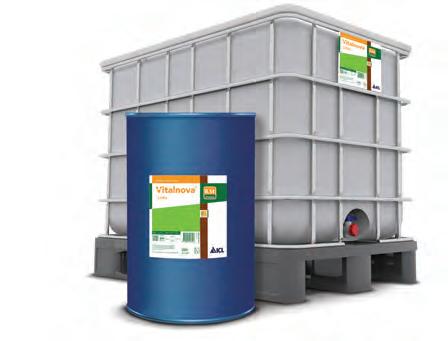
2 proven products, 1 winning formulation.
Vitalnova Stressbuster is a specially formulated liquid treatment to help condition turf against stress and also aid recovery from stress.
Vitalnova Links is a formulation that is designed to improve turf health and quality without creating artificial growth. It contains SMX concentrated seaweed extract combined with the proven biostimulant Vitalnova Blade.
www.icl-growingsolutions.uk | www.icl-growingsolutions.ie

Researched, formulated and produced in house by ICL

Earlier this month, Arsenal collaborated with the WSL, Women in Football and the Grounds Management Association to select a team of thirteen female grounds professionals to prepare the pitch for the North London Derby at the Emirates.
The coverage and support for the women was remarkable and it showcased the incredible work and equality that the industry now offers. In addition, on International Women’s Day, ITV This Morning’s show, highlighted Arsenal’s Tara Sandford and apprentice Bobbie Murphy on their amazing work at the club - which again promotes our industry and career opportunities to the wider world and the next generation of sports turf professionals... let’s hope this momentum continues!
March also saw the return of Scots Turf for its second year at Hamilton Park Racecourse. On a beautifully sunny day, the gates opened to showcase over 60 companies (up from 12 exhibitors in its inaugural year), with over 900 registered attendees. The aim of the show is to support the Scottish turf community and make it accessible to a wide range of professionals - who may not otherwise have the chance to attend a local industry event and I have no doubt it will become a firm fixture in the turfcare calendar.
In this issue, we cover the important topic of working conditions and how many clubs are in desperate need of investment in this area. You would think that these days a warm place to eat lunch, to dry off when the weather is bad or to do some paperwork wouldn’t be too much to ask – but as BIGGA and the GMA highlight, more needs to be done to improve health and safety and working areas - view the article from page 8.
As sustainability becomes ever more prevalent, we also have articles covering water management and water harvesting (page 16), biodiversity (page 26) and the importance of sustainability for the future of sports turf (page 34).
I know many of you have struggled with renovations over the past few weeks, due to inclement rainfall making conditions near impossible, but hopefully this will soon change and spring is just around the corner!
Fingers crossed anyway!
Kerry
t: 07973 394037
e: kerry.haywood@pitchcare.com








Allscott Park, Allscott, Telford. Shropshire TF6 5DY t: 01902 440270
No part of this publication may be reproduced without prior permission of the publisher. All rights reserved. Views expressed in this publication are not necessarily those of the publisher. Editorial contributions are published entirely at the editor’s discretion and may be shortened if space is limited. Pitchcare make every effort to ensure the accuracy of the contents but accepts no liability for its consequences. Images are presumed copyright of the author or Pitchcare, unless otherwise stated.
Printed by Buxton Press Advertising TSP Media t: 01952 234000


Owen James, Sustainability Manager for England Golf, discusses climate change, water harvesting and sports turf water management.

Does your club need investment? The
and
Ecologist Sophie Olejnik - discusses her continued
Simon Gibson, Head of Grounds at Leicester City Football Club, talks us through the importance of sustainability for the future of sports turf.
Respected industry expert Mark Hunt take a look back at 2023 vs. 2022 from a data perspective.


The all-electric Toro Groundsmaster e3200. All-day power, all-day performance.


For 50 years, you’ve relied on the Groundsmaster range for a first-rate cut. Now it’s evolving. Powered by HyperCell® technology, our first battery-powered out-front rotary mower offers the performance and cut you know and love –but with zero operating emissions and a significantly quieter ride.
reesinkturfcare.co.uk




Professional spray tech, Dan Waring, has won the prestigious title of Amenity Sprayer Operator of the Year (ASOOTY).
Managing all the turf and amenity spraying at the JCB Golf and Country Club in Uttoxeter, he was praised for his meticulous attention to detail and adoption of new technologies to assure accurate application.
Dan’s ASOOTY award presentation was made as part of the glittering BIGGA industry awards at BTME in Harrogate in January, along with the competition’s other finalists, Conrad Cavill of the All England Lawn Tennis Club, Wimbledon and Bryan Ramsey of Complete Weed Control, Scotland South East.
The ASOOTY awards highlight best practice and experience in the challenging role of ensuring accurate application on all amenity surfaces. Sponsored by ICL and Syngenta and managed by the Amenity Forum, the awards seek to share top tips and advice that will raise the standards of spray application across the amenity industry.
Having worked for six years at JCB Golf, Dan has been the full-time spray tech for the past three seasons. One of the keys to his success has been continuous professional development, including a year in the
US on the Ohio State programme with an intensive focus on application skills.
He also regularly completes on-line sprayer training courses and tailoring the latest spraying technology and innovations from the agricultural sector to be adopted for amenity application. Working closely with course manager, Callum Wark, Dan’s role has been integral in using accurate application to deliver a full spectrum of conventional and biological plant protection products and nutrition, designed for a successful Integrated Turf Management approach to overall plant health and turf quality
“I would urge all sprayer operators to undertake as much training as possible, to gain more knowledge on the products being used and the application technology,” he advocated. “That will enable people to be more confident in what they are doing, and give the spray tech’s role the credit it deserves.”
Check the website for more details and entry form for the launch of this year’s ASOOTY and your chance to win. amenityforum.co.uk
The Toro Student Greenkeeper of the Year Awards provides you with the opportunity to expand your experience by meeting and competing with the best.
The Awards include the Toro Student Greenkeeper of the Year and the Toro Young Student Greenkeeper of the Year and you can enter now!
WHO CAN APPLY?
Any greenkeeping student who is undertaking one of the listed qualifications in the UK and Ireland (at the time of application):
Level 2 Work-based DiplomaGreenkeeper / SVQ
Level 2 Certificate in Golf Greenkeeping
Level 3 Work-based DiplomaGreenkeeper / SVQ
Level 2 Diploma / National Certificate (NC)
Level 3 Subsidiary / Extended Diploma
Young Award students must be aged 21 years or under at time of application.
Closing date for entries: April 2024
Interviews:TBC May 2024
National final: TBC September 2024.
For further information and to apply: reesinkturfcare.co.uk/sgoty
The awards are an incredible platform to boost your career.Jon Cole, Divisional Business Manager, Reesink
Turfcare






















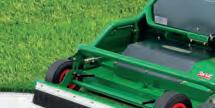
















The GMA’s Young Board of Directors, sponsored by Reesink Turfcare, has recruited four new talented young grounds professionals to its ranks. The new additions will add fresh energy to the Young Board’s efforts to inspire the next generation of young people to join the sector.
Joining existing members are Meg Lay, Beth Gibbs, Liddy Ford and Jack Langley. Meg, who recently moved from Gloucestershire CC to Lord’s Cricket Ground, and Beth, who is part of Wellington School’s grounds team, join the Young Board fresh off the back of successes in the GMA Industry Awards 2023 where Meg won Newcomer of the Year and Beth won Young Groundsperson of the Year.
Liddy joins the Young Board with a background in horticulture as well as a BSc in sport and exercise science. Her current role is as a part of the grounds team at St George’s Park, the Football Association’s base for all 23 of England’s national football teams.
Jack joins having progressed from Assistant Grounds person to Deputy Head Grounds person at Ashton Gate Stadium, a multi-sport facility that acts as the home of Bristol City Football Club and Bristol Bears. The four new additions will use their varied backgrounds across sporting and educational facilities, and enthusiasm for grounds management, to represent the GMA in activity that aims to inspire young people to join the sector.
Geoff Webb, CEO of the GMA, is delighted to welcome the four new members to the Young Board:
“We established the Young Board of Directors in 2011 with the aim of encouraging more young people to consider careers in grounds management.”
Beth, Liddy and Meg represented the GMA as part of the all-female grounds team, who prepared the Emirates Stadium pitch for the Women’s Super League earlier this month.
The spotlight is on land-based and environment careers during this year’s National Careers Week, showcasing the breadth and diversity of opportunities that exist in this exciting area.
Lantra, the leading awarding body for the landbased and environment sector, is highlighting that a career in this area is varied and open to all. From career seekers to career changers, there are entry-points and pathways for people from all backgrounds, and all walks of life, which are highlighted on the Lantra careers web resource.
Stephanie Stevens, Careers and Engagement Manager at Lantra commented: “There is a challenge in making young people, particularly, aware that the land-based and environment sector exists – never mind the range of jobs!”

“Lantra is delighted to be celebrating #NationalCareersWeek, following our recent attendance at What Career? Live. We want to support and empower individuals to take the next step in their career by finding out more about pathways like apprenticeships, further education, and the many vocations the sector has to offer.”
For more information visit www.lantra.co.uk











The importance of your working environment and welfare for employees cannot be underestimated!
30% 29% 2%
You would think that these days a warm place to eat your lunch, to dry off when the weather is bad or to do some paperwork wouldn’t be too much to ask, but BIGGA’s research has found that all-too-often, that isn’t the case!
In a statement from BIGGA they wrote: Our thanks go to Pitchcare for drawing attention to this important issue, which we’ve been working on for several years as part of our campaign to improve governance at golf clubs and promote fair wages and appropriate, modern working conditions.
In 2022, BIGGA undertook a workforce and salaries survey that gathered 1,373 responses from turf professionals across the United Kingdom. We followed this up in 2023 with a joint survey in collaboration with the GCMA, PGA and the home unions and this reaffirmed much of our findings. There is therefore significant evidence that investment is required at golf clubs.
of clubs don’t provide an office, drying room or changing facilities for their greenkeepers which, in the context of this year’s persistent wet weather, is quite shocking.
of clubs don’t provide greenkeepers with kitchen facilities where they can put the kettle on or warm their lunch after time out in the cold.
Only one in five golf clubs has single sex changing facilities for its greenkeepers and worryingly,
of survey respondents told us their golf club provided no welfare facilities for the greenkeeping team at all.
This needs to change, for several very important reasons:
• If you wouldn’t work in those conditions, how
can you ask someone else to do the same? If nothing else, there’s a moral obligation to make sure your team has adequate welfare facilities and there are genuine health and safety concerns that must be addressed.
• To achieve the highest standards of course presentation, today’s greenkeepers are increasingly using modern technology that relies on good internet provision and must be kept clean and well-maintained. Without this, golf clubs are limiting what their greenkeepers can achieve.
• If we are to attract the next generation of greenkeepers then we need to provide an attractive value proposition. We can’t change the weather, but we can provide somewhere warm and dry to come back to after a day’s hard work on the course. Likewise, if more women are to come into the profession, we must provide somewhere safe for them to change out of dirty workwear. If this isn’t available, people will pack their bags and switch to a more welcoming industry where they feel more appreciated.
Of course, there are golf courses that are leading this transformation, where maintenance facilities are warm and clean and used by a greenkeeping team that appreciate their employer’s commitment to their own welfare.
But there are also venues that haven’t embarked on that journey yet and so BIGGA has relaunched the survey for 2024, to see if things are moving in the right direction. We’ll be publishing the results later in the year.
At every level of the golf industry, BIGGA advocates for better working conditions and salaries that reflect the expertise and training of today’s greenkeepers. From speaking in front of Parliamentary groups to communicating with members, we raise awareness of the need to invest in staff if the long-term health of the golf industry is not to suffer.

A safe working environment is essential to a well-functioning team with strong staff retention. But managing all the different elements that feed into a ‘safe working environment’ is challenging, with a number of things to consider.
For those responsible for managing a facility, whether it’s a community cricket club or an educational setting, ensuring you provide the right blend of safe facilities and good work life balance is the best way to ensure a positive working environment. Only by being critical when analysing your own environment can you understand whether investment is needed and, if so, how much.
The first and most important thing to consider should always be safety. Safety is of the upmost importance to your staff when creating a good working environment but it’s also critical for other people using your facility, be they players or visitors. When it comes to retention, facilities that don’t maintain the highest levels of safety run the risk of losing the confidence of staff and can either lead to a workplace accident or poor staff retention. Ensuring the correct safety needs are maintained can be a valuable area for investment, so understanding the law around health and safety is essential.
For those that manage facilities, you need to understand what’s required of you as the individual who is responsible for the health and safety of your employees. If your facility relies on the good will of volunteers, then strictly speaking you are not an employer. This does not, however, release you from your duty of care to all those who may be adversely affected by your acts or omissions. Put simply, you may not be classed as an employer, but you have a duty of care to ensure the safety of all who come into your jurisdiction. This may simply be members of your club, children playing on the
grass, or a dog walker making their way through the area whilst your facility operates grounds maintenance machinery. For this reason, you are advised to follow guidance drawn from health and safety legislation.
The first place to start is by carrying out a risk assessment of your activities, identifying any hazards and measuring the risk before putting the relevant controls in place - industry specific risk assessments and safe systems of work documents are available on the GMA website.
We recommend concentrating on five main areas; machinery and equipment, chemicals and hazardous substances, communication with staff, maintenance of buildings, structures and grounds on the facility, and finally other parts of the operating environment, like toilets, hand washing facilities or drinking water. This is just a brief overview, so you can find more detail on the GMA Toolkit: resources.thegma.org.uk.
Once you’ve carried out all the relevant assessments and identified potential hazards, you now know where you ought to consider investment. Not only are there legal requirements to ensure adequate safe working conditions, but the confidence of your staff will often be impacted by the standards of safety you uphold – in short, if your facility is poorly cared for and poses potential risks to staff, they’re going to be less committed to you as an employer and are more likely to move on. Whilst there are a number of areas to consider when looking at investing in working conditions, the importance of health and safety can’t be underestimated.

It’s
Michael Mann, Course Manager at Walton Heath Golf Club discusses how his supervisor team adopt the ‘small things’ in their approach to successful management.
Michael started: “We’re very fortunate here at Walton Heath. The greenkeeping facility is purpose-built and we have a lovely area where we have meals provided by the Club. The expectation is that the team work in all weather conditions therefore, it is only appropriate they are supplied with a nice area and food every day.”
Michael sees it as a necessity for clubs to supply suitable working conditions for the team: “It’s important to have an area which is clean, dry and warm. We invest in those areas so that everyone feels looked after. No matter how good waterproofs are, nobody likes to go out in the pouring rain. At least if the team know there is an oasis of calm in the middle of the day, where they can come to relax and dry off, it definitely helps with morale.”
He reflected on the importance of investing in



working conditions and staff welfare: “In this industry, I know that venues have a vast array of budgets however, staff welfare should be a main priority. I imagine, if you need new equipment, but are managing a tight budget, the temptation is to invest in that area rather than staff facilities. Clubs must also look at the health and safety perspective and provide a safe, clean environment.”
Michael elaborated on the legal side of facility management: “You have to be compliant and provide a safe environment for people to eat. For example, our designated dining area is a no work clothes space. Food and clothes storage must be separate. Despite pesticides getting fewer and fewer, we do use them occasionally, so we always make sure we are clean when we step into this area.”






At RAYMO we have created the tool to do the job on a commercial level - fully electric inexpensive to operate.


The mower itself is extremely low in height allowing you to access low clearance areas and has an outstanding climbing ability for sloping and undulating terrain. The ZTR steering system in combination with 4WD delivers exceptional driving and maneuvering features.




 Peter Leather Grounds Team Manager at the AXA Training Centre
Peter Leather Grounds Team Manager at the AXA Training Centre
 Dobson Grounds Team Manager - The Academy
Dobson Grounds Team Manager - The Academy
We spoke to Peter Leather and Mike Dobson from Liverpool FC, who both agree that working conditions is the main thing to consider when employing staff.
Mike started: “The importance of working conditions is massive and it’s amazing how everything can affect your team.” Peter added: “It is one of the main things to consider when you are bringing people into the club. We have a lot of different age groups and personalities and need the facilities to allow everyone to merge.”
Mike expanded: “If the environment you are working in every day isn’t up to a good standard, it will certainly have a negative impact on your mood. The environment we provide is reflective of what people think of us as professionals. The team here look after the facilities and respect it.” Mike looks at the importance of social space: “If you don’t have an area to go and sit and chat with your colleagues about the challenges you have faced throughout the day, you will never get to know each other and gel as a team.”
Small changes can go a long way to motivating the team and Mike commented: “If the club puts a fresh layer of paint on the walls here in the mess rooms, it freshens things up and gives people a lift. You also have to consider the health and safety side of things; accidents can happen when handling hazardous liquids and the team need somewhere to wash off safely and quickly.
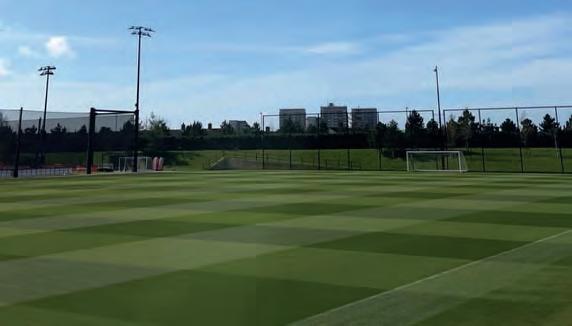
Basic wash-down facilities are so important, but something that is lacking in so many clubs.”
“It is about making it a welcoming environment for everyone, regardless of gender or personalities. For me, when we are looking at recruitment, as long as someone wants to work hard and the CV speaks for itself, then it does not matter.”
When discussing the pressures of the industry and adapting to the challenges, Mike said: “There are so many factors that we can’t control in the industry, but we can make a difference with the team spirit. You will never alter some aspects of the industry, but if you can make it a nice place to work, then that’s a bonus.”
Peter alluded to the effort-for-effort approach: “That also affects sickness levels. We have a good record here because people want to be at work. They don’t just want to be here because of the status of the club, they love coming to work and enjoy being here as part of a team. You can be at work more than you’re home with your family, so it needs to be a good environment.”
Despite the grounds team working across four separate sites, it is an ethos of all for one and one for all. Mike explained: “We’re on the same training ground facility, but we’re run separately; we have The Academy as one entity and then the First Team training ground is another. We are at separate ends of the training ground in different buildings, each with its specific team. We all get on well so there is never an issue for us to go over and give a hand and vice versa.”
Peter went on to highlight the importance of checking on each other: “We always know if one of our team are feeling down and we encourage all members of the team to always say ‘are you OK’ to each other. We offer excellent mental health support within the club, and it’s important to spot when people are having a down day and check in with them… everyone is entitled to have a bad day and need some support.”
Course Manager at Saltford Golf Club, Darren Moxham told us how he managed to convince his committee to invest in the facility management.
What advice would you give to other greenkeepers who are looking to improve welfare facilities?
Welfare facilities tend to be an ‘out-of-sight, out-of-mind’ part of the club. If your facilities need an upgrade, I advise inviting the committee/club owner to visit your welfare facilities, so they can see it for themselves. Letting them see the less-than-desirable facilities is better than words or photos.
Can you tell us a little bit about what you did to get the funds?
We took the opportunity to invite Committee members to our welfare facilities, when a landfill project was taking place at the club. We knew finances were okay at the time, so it was
a good time to ask for an upgrade. The club also invested in a container, which we used as a restroom when the upgrade took place. We still use the container today because it has heating and lighting.
How much funding did you receive and what benefit has this had on you and your team?
I think the upgrade to the welfare building was approximately £17,000 (+5 years ago).
The whole building had stud walling installed, a new kitchenette, a new bathroom, new flooring, a drying room, new heaters, a hand wash facility, double glazing, loft insulation and the external walls painted. The staff do a good job keeping it tidy, but we also have a cleaner who visits twice a week.
The difference the upgrade made was a huge one in terms of team morale. Reps and visitors still come in and comment about the welfare facilities, which reminds me of how they used to be. I think our facilities are still the exception, rather than the rule.




•The
•Deliver
•Produce
•Available
James Matthewman highlights key aspects to ensure your working conditions are up-to-scratch.

To keep a golf course in pristine condition you must ensure your machinery is in pristine condition. Having machinery in excellent condition not only makes it easy for the operator to use, but also safe to usewhich is very important under health and safety regulations. When your machinery is well looked after, it will look after you.
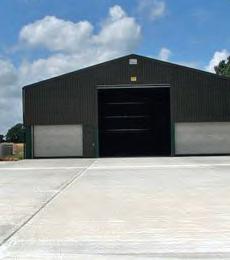
Having a clean workplace is very important. This allows a safe working environment for staff and also keeps all equipment and machinery safe. You must ensure that the workplace is well lit and heated sufficientlyespecially when working inside on rainy days. The workplace should also be well ventilated.

When giving out tasks and jobs for the week, it can be tough when you are understaffed, but it is very important not to overload an individual with work that should be carried out by two persons. If a job can be carried out safely by one person then allow for the task to take the sufficient amount of time to be completed. If you are understaffed for a particular task, please do not under any circumstances take unnecessary risks.

Not every club is in a position to keep up-to-date with the latest technology and machinery, but there are still ways in which you can progress and learn new ways of undertaking projects and tasks. By using social media platforms, this might show alternative methods or ideas which could save both time money. However, if a club is in the position to move on with the times, new machinery and technology can be a fantastic opportunity and investment for the club.

Working in sports turf generally means one thing - you will be working outside. Sometimes, it can be extremely demoralising and can have a detrimental mental impact on your staff. Whether you are a groundsperson or a greenkeeper, we all have a fantastic desire to produce the best surfaces, quite often in some of the toughest conditions - but be sure to praise your staff. Undertake regular performance feedback and check-ins and reward when you can. It is always vitally important to keep your workforces morale positive at all times.
James Matthewman is Deputy Head Greenkeeper at Maesteg Golf Club and welcomes topics for future Top Tips.











































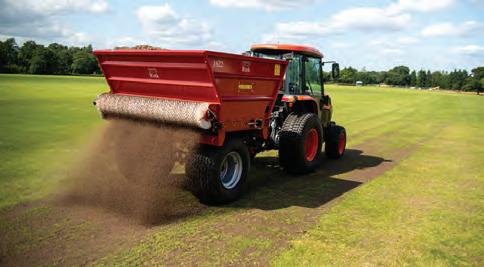








































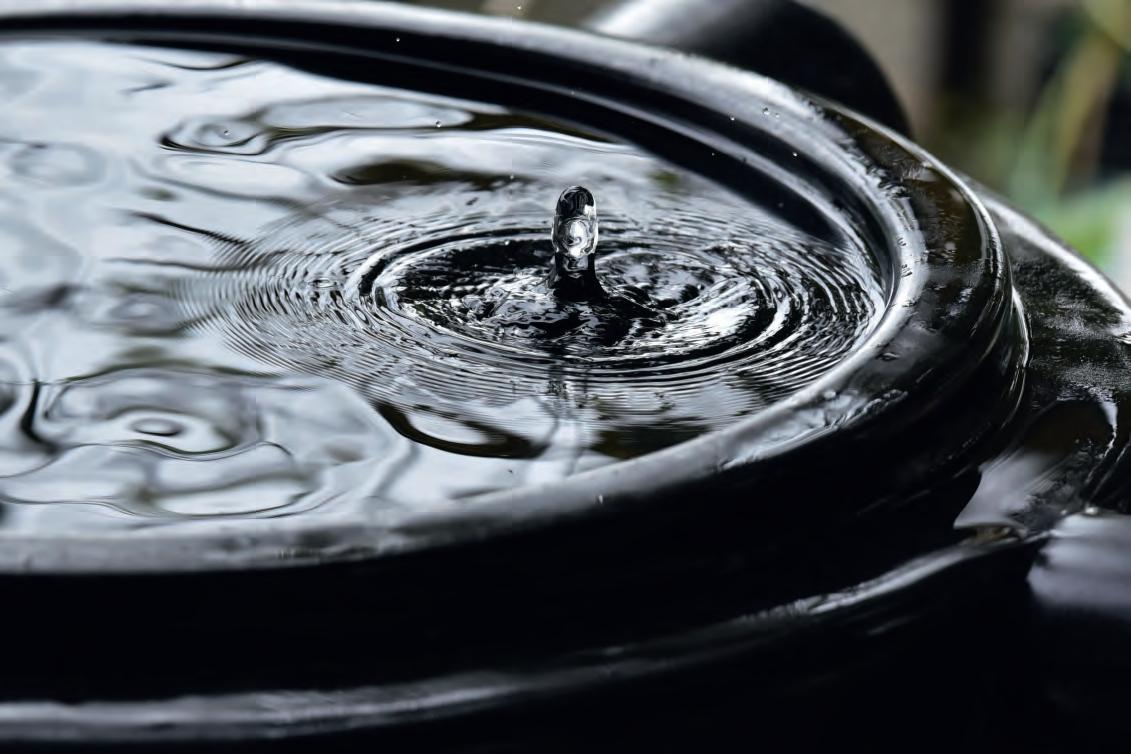
 Owen James Sustainability ManagerEngland Golf
Owen James Sustainability ManagerEngland Golf
Having worked in both greenkeeping and hospitality in golf clubs, Owen has a natural understanding of the nuances related to changing mindsets within a golfing environment.
Role and Responsibilities
A brief stint in education, followed by working for a leading water company on flooding and climate resilience, he is now combining all his skills and passions for both the game and sustainability for England Golf. Owen’s drive is clear to see, he explained, “From ‘hidden
gems’ to 54 hole venues, the time is now for golf to become more sustainable, and my passion is to motivate everybody involved in golf to think about the future, so that our game can grow, thrive and provide climate solutions to local communities.”
Our differing climate!
We all agree that unpredictable weather is making it harder to manage and maintain our golf courses. In some areas of the world, this may be due to drought and water scarcity, while in others it may be flooding due to extremes in rainfall and storm events. Some areas are even
Rainfall totals by month
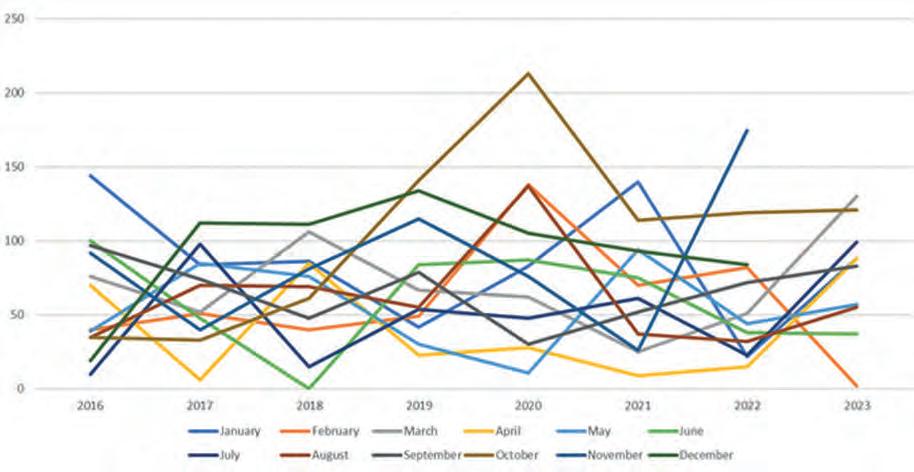
experiencing drought followed by flooding, with very little warning or time between the two extremes. Not only do most golf courses fall under this umbrella (sorry), but already some links courses are facing added physical incursions due to increased coastal erosion.
“We have been seeing extremely unpredictable weather patterns in the UK for the last few years,” explained Owen. “Data is showing us that we no longer have traditional ‘seasons’ and that we now experience drought or flood events throughout the year as shown in our total rainfall graph collected over the last eight years.” (see figure 1).
“Everyone knows there is pressure on water, and that the situation is not going to get better! In fact, it’s going to get worse,” cautioned Owen. “Recently, the Environment Agency warned that over four thousand million extra litres of water could be needed every day if action is not taken to reduce usage between now and 2050. Population growth, climate change and over abstraction is driving the increased pressure – even in a nation with a reputation for being rainy.”
There is no legal obligation for water boards to supply water for anything other than residential use.
Owen went on, “Climate change is not only causing more drought events, but is also making rainfall patterns hugely different! Warmer air is holding more moisture in the atmosphere, and as a result, our rainfall becomes far more intense and less predictable! This means more severe storms, more flooding, more runoff, but crucially as a result, less absorption by the turf and less recharging of aquifers.”
• 65% of golf clubs still rely on mains water for irrigation.
• Golf abstracts eight times more water than the next nearest leisure activity.
• 1,200 golf facilities are currently located in areas of ‘water stress’ in the UK.
Owen clarified, “Water companies currently provide mains supply because they can. As water stress increases, the ‘hierarchy of need’ will inevitably come into place.” He explained, “Golf, up to now, has been exempt from hosepipe bans

Below - Figure 2 Sustainability relationship.
Social Sustainable
on the grounds of safety, in that watering greens/tees is necessary to avoid ruts which may cause dangerous/unpredictable ball bounce. How long can we keep relying on that status?”
So, from those alarming statistics, it’s fair to say that if a golf course draws water from the mains, then soon it could be in big trouble! He explained, “It’s vital that clubs reduce their reliance on mains water supply and investigate other water source options of bore-hole abstraction and/or river/stream abstraction, and most importantly, on-site storage of water. However, clubs mustn’t be complacent, as even these sources are at risk due to reduced water found in the ground.”
To drill or not to drill (that is the question)
Many golf courses have already recognised the benefits of having either a borehole or a local water course to supply their water, because it’s far more economical than mains supply and continues to be more so year on year. Using these sources for irrigation systems also usually has the advantage of supplying larger volumes, higher pressure and, as borehole water is non-potable, is therefore free of chlorine
and fluoride, which could actually benefit turf health. Owen explained, “Water boards abstract from aquifers too; if you’re unlucky enough to be sharing with them, you’re more likely to face issues, especially in areas of water stress and during periods of drought. Water boards are still obliged to use the aquifers to satisfy domestic demand and can impose a ‘Section 57 notice’ notice on clubs at these times, which reduces abstraction volumes or in worse case situation stop abstraction altogether! We have watched these instances closely, and the trend is that these notices are being issued more often, and the warning ‘notice periods’ are getting shorter and shorter, leaving little if no time for the clubs to plan alternatives.”
With rising summer temperatures causing heatwaves and droughts, and significantly more extreme rainfall in short ‘bursts’ causing flooding, most turf managers are searching for the necessity to bring an element of harmony and stability to their management regimes. Owen explained, “Does the answer lie within the problem? Does joined up thinking need to be applied to the ‘boom or bust’ water situation we currently face?” He continued, “One greenkeeper recently reported to me that he’d calculated that his flooded golf course contained the same amount of rainwater equivalent to his annual irrigation usage for the year; but had no means of storing it! One of the best ways to ensure you reduce your water shortage risk is to store it when you have an abundant supply. With the right licences, harvested rainwater (it must be collected before it reaches any water course or aquifer) is free and moderately pollutant free.” He continued, “We must see the real value of water, and move away from the historic ideology
that water is cheap and in abundant supply. Wherever we get our water, it remains a problem if we use it instantly. ‘Instant water’ is a thing of the past and the answer to future proofing water usage is to harvest and collect water in manmade holding tanks, ponds, lakes or reservoirs.”
You do not need a water abstraction licence:
• To harvest rainwater into a reservoir, with or without an overflow, if it only holds collected rainwater.
• To use harvested rainwater that has not entered inland surface waters or ground water.
• If the rainwater storage system is used for irrigation and is not a source of water supply.
• To use water stored for irrigation in a reservoir with an overflow, provided that the reservoir is only filled by harvested rainwater or water abstracted from another source under a full abstraction licence.
Sustainability
Sustainability is such a commonly used term


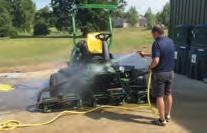

these days that we seldom stop to think what it really means. Golf course sustainability means thinking simultaneously about benefits to the environment, society and the economy, so that we can continue to improve their positive value through future generations. In practical terms, this necessitates three key aims (see figure 2):
• To enhance nature and conserve resources.
• To provide economic stability for your organisation.
• To deliver multiple benefits for communities.
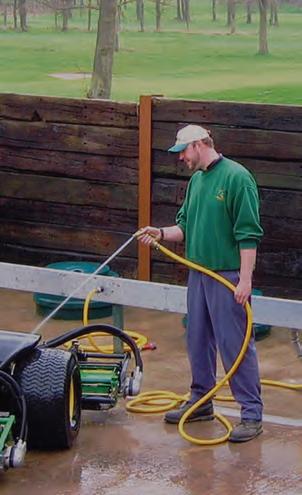


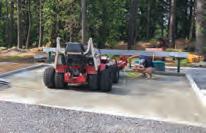



“Here at The Celtic Manor Collection, we have been striving towards water conservation over the last two decades.
We do not rely on bore hole or mains water abstraction - instead, thanks to our drainage water harvesting system and lake water storage infrastructure, we now have a future proofed, ‘closed loop system’ for all our irrigation needs.”
Jim McKenzie MBE. Director of Golf Courses and Estates Management“Golf has a unique relationship with the natural environment and a responsibility to ensure that future generations are able to enjoy the game played by millions around the world” - The R and A.
“There are many elements we must explore when we think about sustainability,” explained Owen, “and I don’t think any one solution on its own will be sufficient. The key challenges for any turf manager for future proofing your water storage and usage is to investigate ways to help make your system as efficient as possible.”
Possible areas to scrutinise are:
• Move away from mains supply.
• Look into sustainable agronomy and alternative grasses.
• Invest in rainwater capture and harvesting.
• Winter abstraction.
• Find space for on-site water storage.
• Improve irrigation efficiency
• Flooding in your area? Position yourself as a solutions provider, by speaking to the council, water boards and the Environment Agency.
• Speak to housing developers, taking their storm water could be a massive bonus for both parties!
Finally
Owen concludes, “I usually ask the decision makers at any club these two questions.”
1. How long could your golf course survive without water?
2. How high up your priority list is it to make sure you have a reliable SOURCE of water? He continued, “As you can imagine, it usually stirs up some thought provoking conversation, but I believe we need to consider these crucial
elements if our primary asset (the golf course) has any chance of withstanding our future climate and the changes it has, and will, continue to throw at us as turf managers. Here at England Golf, we are committed to supporting you all in this endeavour, so please reach out where I will be only too happy to advise.”
It just leaves me to thank Owen for his time and insight into what has to be one of the most important issues related to our industry at the moment, and reiterate that his expertise in this field will be invaluable if you require England Golf to get involved in your water sustainability future plans.
 Article by Phil Helmn.
Article by Phil Helmn.












Abridge Golf Club has seen its 14th hole transformed with a recent pond project. Course Manager, Geoff Smith, explained how the pond would not only add an aesthetic appeal, but also benefit wildlife integration on the course.


 Geoff Smith Course Manager
Geoff Smith Course Manager
Geoff started by telling us where the idea came from: “Before we approve and start new projects, we wanted to improve a few things already featured on the course, so we started a development fund where a staggering 450 people contributed. It was decided in a committee meeting to revamp the pond, which meant reshaping it, plus the addition of a fountain to make it aesthetically pleasing. It has probably cost about £30,000 to £35,000 in total, and we are very lucky to have the budget and resources to be able to complete a project such as this.”
When asked how much work has gone in, Geoff replied: “It was about doing one thing at a time and, to be honest; we didn’t look too far ahead. The design of the pond started small – on an A4 piece of paper in fact and, as things developed and work commenced, we utilised contractors
where required. Land Logical, based in Kent, undertook all of the shaping and big work, whilst Ashley from Irrigation and Water helped a lot with the technical side of things. The whole team worked on the project and handled about 180 tonnes of stone - which you can imagine was hard work. A few late nights, bars of chocolates and perks to push the team on cemented why we won the BIGGA Greenkeeping Team of the Year last year; they were all fantastic. The cost of labour when you hire external staff can mount up, so having a team in-house who can do it saves the club a lot.”
He explained how the decorative fountain has improved the health of the water and brought a certain elegance to a picturesque pond: “The water comes off the M25 and there are a lot of bad substances within that. There is nothing worse than stagnant slimy water, so we created a 5 cubic metre chamber to enable the water to

move all the time. It has given us our own water source which is directly on the course.”
The project will help generate the right environment and habitat to create and sustain wildlife. “We have added Koi which will also serve in controlling the pond weeds and the habitat should be great for them. We still need to add flowers to the area to finish it off, but this should be done within a few weeks.”
The reaction from members has been fantastic so far, Geoff continued: “We have
received 100% positive feedback with members loving the new look, the shape and the design of the pond. The hole had to be shut for about four weeks, but members were walking past the work that we were doing and constantly saying that it was looking better each day. Members want to see where their money is being spent, so undertaking projects like this one gives back to them.”
Article by James Kimmings.Here are three methods to help solve various problems in which ponds and lakes are subject to:
MECHANICAL CONTROL - Aquatic plants and their root systems, as well as algae, can be eliminated by mechanical control. The most effective way to implement this approach in medium-sized to large ponds is through dredging, weed harvesting, roto-tilling or raking. But, because it addresses the symptoms rather than the underlying issue, this approach is only a stopgap measure. It also requires a lot of labour, is labour-intensive and must be repeated when the plants grow again.
CHEMICAL CONTROL - The most popular technique for managing lakes and ponds is chemical control. To eradicate the algae and vegetation from the pond, herbicides are used. Although this approach works quickly and effectively, it may also cause additional issues including fish deaths and smells. Moreover, chemical management, similar to mechanical control,
only addresses the outward signs of the issue, is costly, frequently necessitates permits, and can harm nearby plants and turf if treated water is applied to other areas for irrigation.
BIOLOGICAL CONTROL - This offers a third approach to managing ponds. The introduction of fish that consume weeds, such as grass carp or koi, is one use. These fish can be very useful in controlling overgrowth of weeds. Long-term costs are low, and once they are in the water, they don’t need labour or maintenance. They are robust feeders, yet they will only eat algae in the absence of their favourite aquatic plants. Since pond plants use photosynthesis to produce dissolved oxygen, eliminating all aquatic plant growth and a significant oxygen source may cause odour issues and poor water quality.






T:
@AgrovistaUK









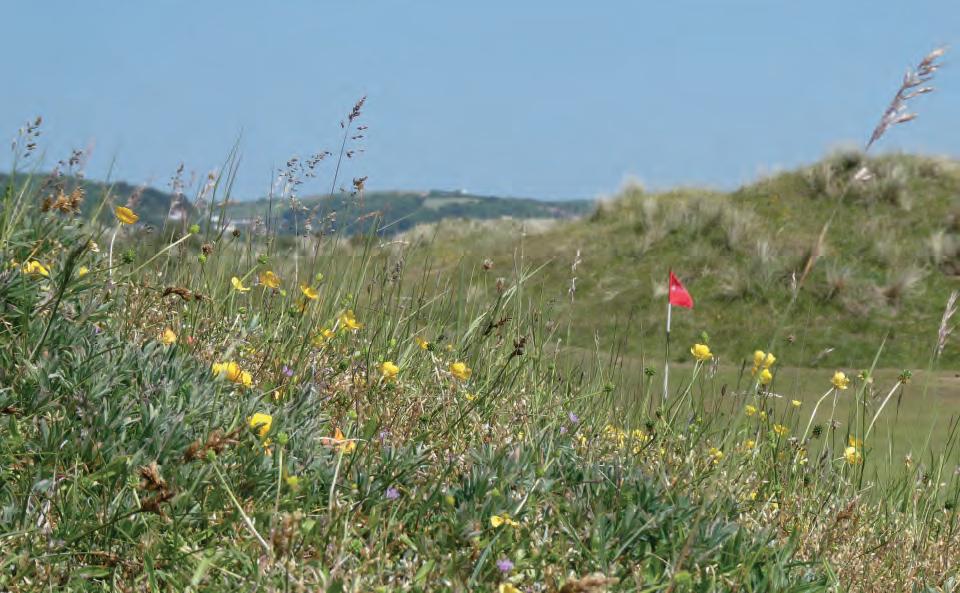
- EVERYTHING IS RELATED TO EVERYTHING ELSE!
Ecologist Sophie Olejnik - discusses her continued work on assessing biodiversity on our golf courses and the crucial role golf clubs can play to help reduce or even reverse the steady decline in our flora and fauna up and down the country.
Following graduation and gaining her bachelor’s degree in ecology and environmental biology at Leeds University in 2015, Sophie joined the team at STRI Group as an ecology and environmental consultant.
Working alongside Bob Taylor for almost three years helped both her skill and knowledge base immensely. From there, Sophie moved to work for BSG Ecology as a senior ecologist for two years before heading back to STRI in March 2020. April 2021 saw Sophie make the leap into freelance ecology and environmental work under her own banner- Oleo Ecology. With her
extensive experience, she has enjoyed working on projects across the UK in both upland and lowland environments in a wide and diverse spectrum of habitats.
Sophie regularly works with golf clubs to provide ecological surveys and reports for both planning and general habitat management, as well as Phase 1 habitat surveys, UKHab and biodiversity gain assessments, including condition assessments.
“I count myself fortunate to have worked with many different golf courses to study and enhance their nature and biodiversity,” explained Sophie. “I am passionate about



exploring the opportunities we have to better understand the wildlife golf courses can support, and how I can help provide practical management recommendations to help continue to conserve important flora and fauna on them.”
“Biodiversity is essential for the processes that support all life on Earth. Without a wide range of animals, plants and micro-organisms, we cannot have the healthy ecosystems that we rely on to provide us with the air we breathe and the food we eat,” explained Sophie. “The state of biodiversity in the UK is in crisis with more than 40% of species populations either in decline or being identified as being of conservation concern.”
There has always been a historic understanding amongst greenkeepers that they are somewhat guardians of the open space they manage. However, there is increasing awareness of their part and their golf club’s role in protecting and enhancing the environment and the ability for golf courses to contribute to nature’s recovery. Only by understanding its richness and quantifying its value can we
begin to appreciate biodiversity and how we can integrate positive management principles of club decisions, so that biodiversity is appreciated, conserved and restored in a sustainable way to deliver benefits to everyone.
Sophie was commissioned by The R&A to conduct a five -year study of biodiversity on golf courses across the UK. Of course, the key to any successful initiative is to measure the starting point and then continually measure, monitor and record progress throughout the project. “I am delighted to be heading up this invaluable project,” said Sophie. “The project was set up in 2022 with the aim of assessing and quantifying the biodiversity value of existing golf courses over a five-year period, using the biodiversity metric 4.0.”
The biodiversity metric measures biodiversity, using habitats as a proxy, and has been created to assist with the implementation of ‘Biodiversity Net Gain’, something which is now mandatory for all new developments in England. The project uses the metric as a measurement tool to quantify the biodiversity value of a select number of golf courses which

Above Dingy skipper, a Species of Principal Importance in England, at Saunton Golf Club.
support a vast variety of habitats, including:
• Grassland
• Hedgerows
• Lakes
• Woodland
• Watercourses such as rivers and streams
It calculates the biodiversity value of each habitat parcel based on numerous different factors including the habitat’s:
• Size
• Condition
• Strategic significance
• Type
Sophie was initially commissioned in year one to provide a baseline biodiversity review of 23 golf courses (heathland, parkland, and links) around the UK. With these survey results now complete, the goal is to now prepare general recommendations for enhancing and maximising the biodiversity value as a way to boost nature on these courses.
Sophie continued, “Importantly, the project aims to identify whether existing golf courses can contribute to global goals to halt and reverse biodiversity loss in the UK.”
Study Findings
“The first year of data has provided some amazing stories about golf courses, and the wonderful work greenkeepers are doing up and down the country, giving an insight into the mosaic of habitats and number of notable species of flora and fauna on all three types of golf course (heathland, parkland and links),” said Sophie. “In year one of the study, over 150
species of principle importance, amber and redlisted birds of conservation concern and other rare or threatened species were found on the golf courses I visited.”
Study data:
• 128 notable invertebrates
• 22 legally protected or notable mammals
• 1 fungi classified as a species of principle importance
• 5 protected or notable reptiles
• 6 protected or notable amphibians
• 120 protected or notable birds
• 72 threatened plant species
• 15 rare or scarce plant species
• 8 plant species of principle importance
“There are so many opportunities to maximise biodiversity on golf courses,” clarified Sophie. “In an increasingly urbanised world, golf courses actually constitute relatively large green spaces; currently, the total area occupied by golf courses in the UK accounts for roughly over four times the total area of country parks.” Sophie continued, “Golf courses represent an important sanctuary for wildlife at a time when many of our native animal and plant species are under pressure in both urban and rural environments. Greenkeepers and ecologists have much to gain by joining forces to seek out new ways for how existing golf courses could become even more environmentally beneficial to society.”
Opportunities for nature conservation
So, how do we begin our conservation journey? I hear you shout. “There are many ways in which


we, as custodians of our green space, could help support nature in its many forms,” Sophie explained. The key is to apply the following some or all the following practices:
• Audit your courses existing biodiversity. Having a starting point helps monitor improvement and highlights areas to concentrate your efforts.
• Reduce mowing of out of play areas. By reducing mowing of tee banks, around water bodies, ditches and hedges can improve both
structural and species diversity.
• Increase diversity in woodlands. Introduce varied species of trees and underplant with native flowering, nut or berry-bearing shrubs.
• Improve diversity of dense scrub. Undertake rotational coppicing to increase structural diversity.
• Provide deadwood. Increase invertebrate populations by stacking dead wood in out of play areas and keeping some deadwood stands.







• Create a plan. All golf courses should develop a nature management action plan. Help can be sought from an array of nature conservation groups.
• Speaking of nature conservation groups, connect with local natural history clubs to share your green space and allow untouched places to be explored by experts to provide further insight into the biodiversity thriving on your golf course.
• Appoint an in-house Biodiversity Champion. Appointing a member of your team can have significant benefits of engaging with golfers, staff and other key stakeholders.
• Provide roosting and nesting boxes. Bat roost boxes and bird nest boxes are low cost and can be made in-house and installed on
buildings and trees, helping to support redlisted birds like swifts and starlings.
• Use your purchasing power and make sure your money is going towards positive change. By supporting eco-friendly products which are less damaging to the environment, you’re encouraging companies to source and produce their products in a sustainable way too.
• Implement a sustainable recycling programme which includes composting. Don’t forget to recycle in the canteen too!
• Explore hybrid or all electric equipment which reduces noise and emissions. Creating a quieter environment is more beneficial to both humans and wildlife!
• Re-use equipment or materials wherever






The Kress RTKn robot mowers extend unmanned mowing to larger areas. They efficiently operate in parallel lines and autonomously move from one area to another, as if driven by humans. There is no need for boundary wires or on-site aerials. Available models are capable of maintaining grounds from 3,000 m², right up to 36,000 m².



possible. Recycling has an impact on CO2 emissions and air quality, saves natural resources such as trees, water, minerals and supports a cleaner habitat for humans and animals.
• Make green thinking a key part of your culture! Include your employees in your environmental vision by getting them engaged and involved. Talk to and collaborate with your team members to gather their ideas for how your club can go green and be more environmentally conscious in the workplace. Getting input from employees will allow them the opportunity to embody and embrace your new mission and goals.
“There are countless benefits to improving biodiversity on our golf courses,” stated Sophie. “Some are straight forward and obvious, but some are deeper rooted in our mental health and overall well-being.”
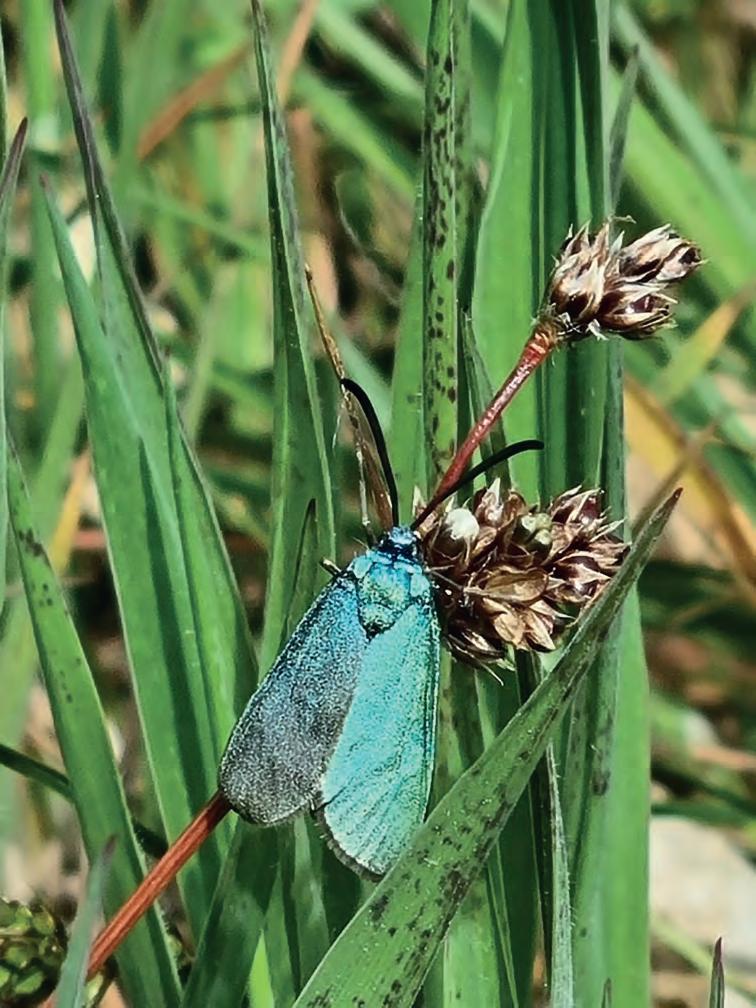



‘The greatest threat to our planet is that someone else will save it!’
Robert Swan OBE (made the longest unassisted walk ever to the South Pole).
• Cost savings on fuel. As we leave out of use areas untouched, we significantly reduce our fuel consumption. Less machinery usage leads to reduced servicing requirements and repairs.
• Cost savings on materials. Reduced dependencies on pesticides and chemicals help reduce negative impact on the environment and save money. There are nature based solutions to some turf challenges - starlings and oystercatchers are reportedly excellent natural predators for grubs found on fine turf surfaces!
• Cost savings on labour. Again, less mowing and management (in the right places!) will help focus the workforce on detail work on more intensely played surfaces.
• Creates an enriched beauty on the golf course (flowers/insects/birds/mammals).
• Promotes a positive PR message to local community.
• Builds a sense of well-being for all (staff/ customers/guests).
• Generates pride in your vision of sustainability.
The Earth is what we all have in common
It’s widely acknowledged that we are the first generation to recognise the impact and destruction of our planet and we could
be the last that can do anything about it. By stepping up and effecting real change in the management of our golf courses could make a real difference. By modifying our practices, we can reduce or even halt the decline in biodiversity and begin to improve the natural environment on our golf courses for the benefit of all.
Promoting workplace wellness through a mindful and healthy environment, to allowing your team members to think of the bigger picture and encouraging environmentally conscious practices at work will help your team feel healthier, more satisfied and more driven to thrive at work. It’s important for us to not just talk about how much we value the environment, but to actively work towards an environmentally conscious workplace. Above all, the benefit of leaving a lasting and positive impression of environmental impact will stay for generations to come.
It just leaves me to thank Sophie for her time and insight into conservation and what we can all do to promote biodiversity. I look forward to catching up again to report on the continued project findings and the stories she has to tell during her travels up and down the country.
Article by Phil Helmn.




Simon Gibson, Head of Grounds at Leicester City Football Club, talks us through the importance of sustainability for the future of sports turf.
After winning the Environment and Sustainability Grounds Management Association Award back in 2023, Simon reflected that sustainability had been a focus behind the scenes for quite some time at Leicester, however, now is the time for implementation. “We have used background research to put projects in place as we look into what’s next for our department. We work in an industry that can make a significant impact in this area and it’s all our
responsibility to be proactive.”
He described some of the sustainability projects that have been implemented at the club in recent years: “Due to its age, the stadium pitch needed a full reconstruction and we had to be as future proof as possible. We opted for a water reclaim system that enables us to reuse any water that goes on to the pitch, having been through a UV filter, we also run a UVC machine to reduce fungicide applications.” He then discussed the training ground: “At Seagrave, there are lots of sustainable areas
including a kitchen garden that produces vegetables directly for the first team, beehives in which the honey is used for our performance chefs to make flapjacks, and the management of existing and newly planted woodlands. In addition, sensitive aquatic habitats, bat and bird boxes have been built in part by the help of local school children, so there is a community theme to the site.”
When asked about what the club are up to at the moment, he said: “We have
started looking into composting at Seagrave and how we can explore and improve ways of upscaling the kitchen garden and increasing community involvement. Our landscape team are shadowing ecologists when they are on site, so it is a great learning experience for them.”
Simon recently took up the mantle of Head of Grounds and he explained how this has affected his day-to-day role: “I was part of a particularly good senior

How did it feel to win the Award?
It was a massive achievement for us as a club; it is one of the building blocks of our Seagrave training facility which is in a countryside environment and had to blend into the surroundings. This is especially important at the site where we had to make as minimal impact as possible and integrate into those local surroundings.











Above The team with the GMA

management team, who have guided our department for nearly ten years. The step up would have felt far greater if it wasn’t for great preparation from John Ledwidge, and Callum Allsop moving up to Deputy Head has also made the transition easier whilst keeping the continuity in the department. ‘Pressure is a privilege’ and that is certainly the case heading up a high-performing team spread over multiple sites. Due to the nature of the role, we have a significant impact on the environmental and sustainability side of the club. Being on the task force helps to be able to tell the story across the club about what we are already doing and what we have coming in the future.”
“Here at Leicester, we have an environment and sustainability task force whose aim is not only to guide the club through its sustainability targets, but to also raise awareness of all the things that we have been doing recently within the club. There are a lot of marginal gains in this area by doing lots of small things which, when added together, make a big impact. Such
I started 25 years ago when I finished university and started looking for a job to get me through the summer. There was a groundsperson opportunity at Leicester and I have worked at both Filbert Street and King Power Stadium as well as Belvoir Drive and now Seagrave. The longer I stayed the more I enjoyed it; being outside all day, seeing the impact of the work that we do gives you an immense sense of pride. It is also fantastic to be involved in professional football, where so much goes on in the background. So many people play a part in the whole operation to make matchdays happen and to get training sessions on where everyone is looking for their 0.1% improvement.
Below
The installation of the bee hives to the production of honey.

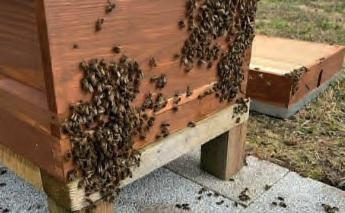

as turning lights and monitors off every day, increased use of the electric mower fleet across all our sites, or our LCFC in the community team who do great work in schools and bring classes into our STA to work on projects.”
Simon highlighted the importance of the club helping to boost grassroots sport within Leicestershire: “When we had the pitch resurfaced at the King Power stadium, much of the rootzone was given to local grassroots teams to help with their renovations - this is great that we can be having another form of impact into local grassroots football alongside the current Sports Turf Academy (STA) work. Some was also used in part to build our trial plots at Seagrave on which the STA can conduct some of their research pieces. We also distributed the artificial track to local teams and grassroots whilst the undersoil pipe work was sent for recycling.”
HIGHSEEDPURITY
RAPIDESTABLISHMENTANDOUTSTANDINGWEARTOLERANCE
PROVENTOLERANCETOALL MAJORTURFDISEASESINCLUDING BROWNPATCHAND GREY LEAFSPOT
UNIQUE 8 CULTIVARBLENDINCLUDINGBOTHDIPLOIDAND 4TURFCULTIVARS
EXCEPTIONAL VISUAL MERIT
GROWMAX COATEDFORIMPROVEDESTABLISHMENT






J Premier 4Turf 25 is the result of DLF’s global disease watch programme, the industry’s first mixture with proven Brown Patch and Grey Leaf Spot resistance.

EFFECTIVE MOISTURE MANAGEMENT IS KEY
As sports turf managers, we know that managing moisture levels during the playing season is critical for turf health and, in turn, surface performance for sport.
Whether we are managing football or rugby pitches, tennis courts, cricket grounds or bowling greens, appropriate soil profile hydration is fundamental. Get it right and you are on the way to getting the best from the playing surface in question.
As we come towards the end of these playing seasons, be this late spring or late summer, turf managers complete renovations which are necessary for maintaining the quality and playability of the specific sports surface. The specific tasks and timings will vary depending on the type of sport, climate and the condition of the surface, but typically renovation work


will include aeration, topdressing, fertiliser applications, overseeding and routine mowing alongside repairs of specifically damaged areas such as goalmouths or worn cricket ends.
End of season renovations are the time when many sports surfaces receive their greatest resource inputs, be this hired aeration machines or applications of fertiliser, seed, top dressing and sand. Getting the best results from these resources is essential if the quality of sports surfaces is, at the least, to be maintained and ideally improved for the following playing season.
Managing moisture levels throughout this renovation and recovery period is not particularly costly nor time consuming but can have a significant impact on the results of the renovation work.
If budgets permit, employ a dedicated sports turf moisture meter such as those available through POGO, Field Scout, Delta-T Devices or similar. Real time, objective, reliable data will enable better informed decisions about the need, or not, for irrigation.
1. Seed germination and establishment
End-of-season renovations generally involve introducing seed to repair worn or damaged areas. Seed can also be introduced at this time to bring about improvements to sward composition, and consequently turf surface performance in the longer term. This may be by introducing a greater amount of perennial ryegrass into a cricket table to improve wear tolerance, or fescue overseeding into a bowling green to provide better-quality species composition to improve drought tolerance. With the cost of a 20 Kg bag of seed ranging from £100 - £400, depending on grass species and cultivar quality, it is important to get the best from any introduced new seed.
Moisture plays a crucial role in seed germination. Adequate moisture is essential for initiating and supporting the biochemical and physiological processes that result in the seed developing into a new seedling grass plant. Water is vital for the initial stages of seed germination, triggering the uptake of water by the seed, activating enzymes, supporting respiration, facilitating nutrient transport and enabling cell expansion. These processes need water for them to be completed successfully. Insufficient moisture can lead to poor germination rates and weak seedling development; too much water and seed rot or fungal diseases can occur, again leading to poor rates of establishment.

Water is essential for cell expansion and elongation. As roots absorb water, the cells in the root tissues expand, allowing the roots to grow and explore a larger volume of soil. This growth is crucial for establishing a healthy and extensive root system. In turn, a healthy root system allows the plant to store water and withstand dry periods by tapping into these reserves.
Roots take up water from the soil. Sufficient moisture is necessary for the roots to be able to absorb water through root hair cells in a process called osmosis. Without an adequate water supply, the roots cannot function properly and may not be able to maintain plant health.
For many sports, this root system goes on to play a vital role in strengthening and reinforcing the soil structure and providing a more robust, wear tolerant surface.
3. Nutrient uptake
Sometimes overlooked, water is key for nutrient uptake, with water serving as the vehicle for the transport of nutrients through the soil profile to the plant root and then into the plant through mechanisms including passive diffusion and active transport. These nutrients may have been applied in a specific fertiliser product or may occur naturally within the soil profile. Either way, essential minerals and nutrients dissolve in water and are transported to the root surface, where they can be absorbed by the plant. Without sufficient moisture present in the soil profile, these processes cannot occur, potentially leading to nutrient

deficiencies that may affect plant health and, in turn, turf surface performance.
4. Turfgrass disease prevention
Maintaining appropriate moisture levels helps prevent the development of turfgrass diseases. Excessive moisture can create conditions favourable for diseases, while overly dry conditions will stress the turf and make it more susceptible to turfgrass pathogens. Seedling turf is particularly vulnerable to drought stress due to a shallow root system, limited water storage capacity and high transpiration rates as compared to mature grass plants.
From the turfgrass research completed by The Aquatrols Company over many years, we have been able to prove that the use of a good quality soil surfactant such as Revolution, Dispatch Sprayable or Primer Select will significantly improve soil profile hydration and, in turn, enhance the results from end of season renovation programmes.
Even if a surfactant programme is not being routinely used, there are proven benefits in using a surfactant in conjunction with renovation work. A soil surfactant will improve rates of seed germination and the establishment of seedling grasses by enhancing surface water infiltration, developing uniform soil profile hydration and making sure that applied water, rain or irrigation, wets the soil and seed evenly for faster, more uniform germination. For best results, soil surfactants should be applied two weeks before planned renovation and overseeding to prepare the

soil and maximise results gained. All Aquatrols surfactants are safe to use on clay loam soils or sandy rootzones, and on seed or seedling turf.
Conclusion
Effective moisture management during end of season renovation programmes contributes to the long-term health and sustainability of sports
turf playing surfaces. With sufficient moisture present through this critical period, a strong and resilient turf surface can be established that is better able to withstand the pressures of regular use.
By prioritising moisture management during these end-of-season renovations, turf managers can optimise the success of these practices, increase results from any introduced seed and achieve a healthier, higher quality sports surface for the next season.
The Aquatrols Company develops technology to optimise soil – waterplant interaction, improve irrigation efficiency and thereby reduce water and energy inputs. We take seriously our responsibility to deliver products that will enhance water use, thereby helping protect the future of our water environment.
For more information, contact your local Aquatrols Account Manager.






“A major factor in our seed selection was the high wear tolerance and recovery … Another football club had mentioned they were impressed with the colour given by one of the cultivars Barcristalla, which contributed to our decision to use Barenbrug’s Elite sport.”



Mark
Hunt - Weather Analytics, Prodata Weather Systems
I thought it would be interesting to take a look back at 2023 vs. 2022 from a data perspective. This data came from a Davis Vantage Pro weather station mounted at 2m above turf height.
As the media headlines proclaimed, 2023 was the warmest year ever globally, significantly warmer than any previous year. 2024 has already started warmer than 2023. From a more local perspective, 2023 marked the warmest year on record for Ireland, Northern Ireland and Wales, the 2nd warmest for England and the 3rd warmest for Scotland.
As I have discussed before, our jet stream 'complicates' our weather and provides us with the familiar peak and trough weather extremes that play havoc with yearly averages. Nevertheless, with this year being the second year of El Niño, the smart money is on 2024 being our warmest and hottest on record. Time will tell.
First up, I took some data from my default location in the U.K, The Oxfordshire G.C @ Thame, Oxfordshire. I use this location because I have consistent data dating back to 2005, thanks to Sean Wilson, the course manager.
So here is a summary of 2023 vs. 2022 –Location – Thame, Oxfordshire

I think it is a very interesting set of stats
Looking at the average temperature, we can see that 2023 came in -0.6% or 0.06°C cooler than the previous year. This fits well with The Met Office’s own data where the comparison came in 0.05°C cooler. So the global trend showed a significant increase year on year, but data from England didn’t. Only 4 months of 2023 were warmer than 2022 – January, June, September and December, the latter a

Reproduced courtesy of the BBC articlewww.bbc.co.uk/news/science-environment-68110310.
quantum leap from 3.7°C average temperature in 2022 to 7.6°C in 2023!
From a rainfall perspective, 2023 came in +26% higher than 2022, with an additional 155.4mm or over 6” in old money. Only 3 months were drier than the previous year, February, June and November, the remainder were all wetter. February 2023 was the driest since the 1930’s!!!!
The last 3 months of the year were 31% wetter than the previous year, no wonder it was so challenging from a turf management perspective.
Not surprisingly in a cooler, wetter year, evapotranspiration was 10% down year-on-year with 69.5mm less moisture evaporated. In 2022, the difference between rainfall and E.T. was 135.9mm, in other words, more moisture was evaporated than fell from the sky. 2023 was the reverse, with a surplus of +89mm.
Finally, we have monthly Growth Potential (G.P) which seeks to estimate the potential for growth of a cool season (C3) grass plant, based on average air temperature vs. an optimal temperature of 18°C. You might think that this would follow the same trend as average temperature, but it doesn’t because the formula

will produce a lower G.P figure if the air temperature reaches a point where it is above optimum for plant growth. In other words, it expresses a measure of plant stress. So, if you look at July and August 2022, the monthly G.P total is lower than 2023 because it was hotter (see average temperature) and so the grass plant grew less.
Year-on-year, there was only a 1% increase in total G.P. Now, this comparatively low figure hides the real picture. June to September 2023 produced more growth than the same
Left A dry February in 2022 allowed hassle-free early aeration. Image courtesy of Mark Todd - The Wildernesse Golf Club.
months in 2022, which highlights why it took more work to keep on top of growth (cutting) and maintain green speed for example. December 2023 had 91% more growth potential than December 2022, which when combined with 68% more rainfall indicates why it was so hard to keep on top of surfaces from a cutting perspective (If indeed you were able to get a machine out of the shed at all!). Personally, I think measurement of clipping yield is a more reliable indicator for your facility of actual growth.
There we have it, a snapshot of one year vs. another and hopefully proof why having stats is so useful from an understanding and communication perspective alike.



ON A SINGLE CHARGE ·LIGHT & AGILE FOR UNDULATING TURF ·QUIET, CLEAN HYDRAULIC-FREE DESIGN

Lithium technology powered by Samsung SDI with 60 million hours of use on the finest professional turf

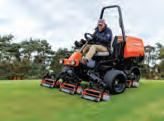
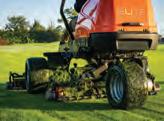

Head of Grounds and Gardens, Neil Harvey, from The Hurlingham Club speaks about the growing pressures for turfcare professionals to continually produce high quality playing surfaces.
Neil started by highlighting the added pressures under increasingly difficult conditions:
“Pressure on those working in turfcare is at an all-time high. Many cricket clubs now have adult teams, youth teams and junior teams. Likewise, with football and golf, people want to be playing all year round and, sometimes, that isn’t possible. Factors like the recent extreme weather can add a lot of difficulty.”
“The level of media presence at sporting venues also adds to the pressure. Golfers will see prestigious courses on television and then expect their local clubs to look like The Open Championship. It isn’t a realistic expectation as every club has different budgets and resources. Other pressures include media scrutiny and finger pointing at the grounds team when a team loses – which isn’t fair.”
When asked about the pressures he found during the 2023 Association Croquet World Championships, Neil said: “Personal pride is a
huge part of it when the World Championships come around. We always want to achieve a high standard here at The Hurlingham Club in everything we do, however, an event like the World Championships will always increase the pressure; the media descend, there are larger audiences and, of course, players from all over the world – who will all offer their feedback about the playing surfaces. You want to showcase the Club in its best possible light and sometimes that adds pressure to, not just myself, but also the team. We received good comments from the tournament and, when the feedback is positive, it means a lot.”
He went on to discuss how his team reacted to hosting a World Championships and what support he offered to motivate them: “I think the team certainly felt the stress. I worked closely with the Croquet Supervisor and my deputy to ensure that everyone was okay, and everyone knew what they were doing. Preparations for the event started eighteen months beforehand, but things can always go wrong. The weather






















www.synprobysisis.com


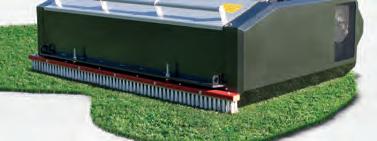












can play a massive role which could make or break an event, but thankfully, it was on our side this time. To blow our own trumpet, some of the players mentioned our lawns were THE best they had ever played on, which was fantastic feedback. That makes all of the hard work worthwhile, and I was super proud of the team.”
Neil stepped away from the pressures of sport, as he discussed the increase in events: “These days, stadiums host live music events and concerts at the end of the season. It seems like these events have increased hugely in the last few years and the planning, renovations and pitch preparation before the new season starts must be a crazy new pressure for grounds staff.”
He went on to highlight the importance of teamwork within turfcare: “It is one of the essentials to managing in this industry. It doesn’t matter if your team is built up of two or 22, you all have to work together. It is super important that people get on and want to help

each other, because sometimes it can be a tough environment to work in. If the weather is awful for days on end, staff morale is really important. We’ve got 26 full-time workers and then 29 in the summer with seasonal workers. It’s a big team, but I try and encourage everyone to get on with each other.”
With over forty years of experience under his belt, Neil nods to his self-development and job experiences when discussing what has helped him deal with the pressures that come with the role: “It probably goes to that phrase – ‘been there, seen it, done it’ sort of thing. You like to think that you have picked up a thing or two throughout such a long career.”
“I started at Reading Boys School, where we had high level cricket teams coming to play at the school, and then Radley College where some of the countries best young cricketers and rugby players trained. When you are seeing some great sportspeople come through the ranks, I suppose that’s part of the motivation and you feel like you are playing a part in their development. Of course, being at The Hurlingham Club in my position has certain pressures behind it. It has given me experience in managing teams, but I certainly think my previous roles helped drive me to where I am today.”
Neil concluded by looking at the bigger picture within the grassroots sport as he highlights the importance of those working in turfcare for student sport development: “Through The Hurlingham Club Foundation, the Club has reached out into the local community in various ways by inviting a number of schools to use the facilities over the past few years. Schools don’t always have the resources and space to provide areas for children so it’s a good way to help. We need to keep children active and, if I can play a part in that by supplying somewhere for them to go and have a kick about, then that’s perfect.”




















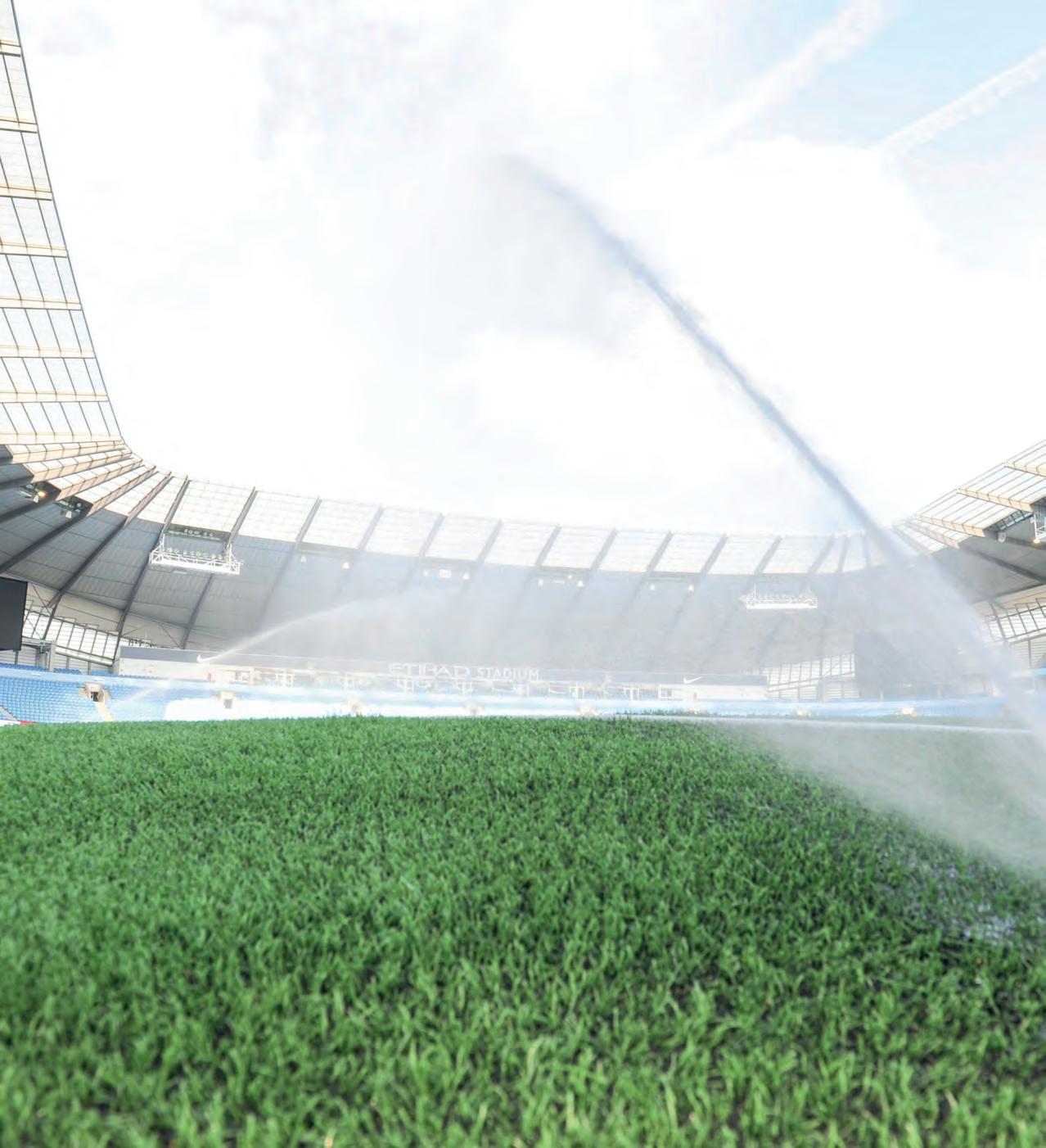

In a study from Matthew C Keller, the suggestion is that “pleasant weather improves mood and broadens cognition in the spring, because people have been deprived of such weather during the winter”. The study also explains that ‘people tend to be more irritable, or even aggressive, during hotter months’ due to the heightened stress.
2024 has seen parts of central and north-east England, and much of north-east Scotland, record more than twice the normal rainfall.
The Seasonal Assessment from the Met Office reported that December was the equal-eighth wettest December for the UK in a series from 1836 and the fourth wettest for Northern England. As we leave one of the wettest winters in recent times behind us, James Kimmings takes a look at how the weather can affect mood.
Despite many in the industry having to work in cold and wet conditions, the likely relationship to the environment isn’t as simple as “cold = bad” or “warm = good.” Sometimes it is about personal preference of tasks in hand; during wet periods you have issues with drainage and during summer months you might experience irrigation issues. Having said that, I can imagine many within the turfcare industry would prefer not to get soaked. It is all about balance.
Typically, cold weather gives your body the signal to settle down and ‘hibernate’, resulting in less energy during winter months. Warmer temperatures can boost your energy along with your mood. However, it’s important to give attention to your wellbeing in all weather conditions.
Rainy days really can get you down
If you feel down during a downpour, it’s not your imagination; bad weather can indeed hurt your emotions - especially if you are working in it.
If you’ve ever had a tingly, uneasy feeling
before a storm, that was likely your body sensing a drop in atmospheric pressure. However, high temperatures can also increase stress levels - especially when trying to get ready for a weekend competition or tournament.
A new study, published in the journal Nature Neuroscience, found that the weather can positively affects one’s mood. This effect is called mood-brightening, and the study found that people in good moods were better at recognising and interpreting weather-related cues, which explains why we get so excited when it’s raining.
A study suggests that there is a growing body of research showing links between the weather and human emotions. One example is the ‘weather blues’. When it’s cold, people feel blue; that is, sad, depressed or down. When it’s hot, people feel happy; that is, cheerful, energetic or high. This is just one example of the complex connections between weather and mood.
Weather can have a huge effect on your mood, and you can even get depressed when it’s snowing or wet. If you’ve ever felt gloomy or irritable when the weather is bad, you’ve experienced what’s called seasonal affective disorder (SAD). SAD is a kind of depression that occurs when the days get shorter and darker and winter approaches.



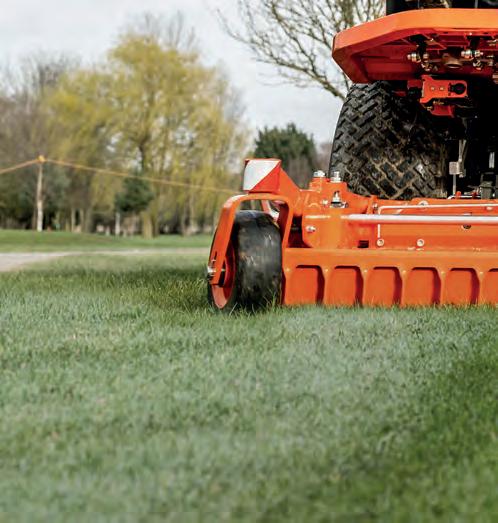
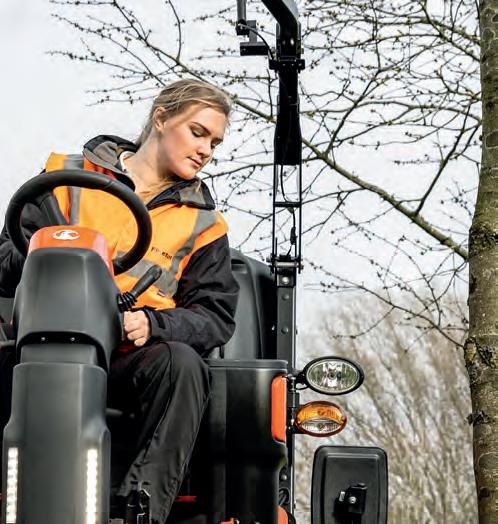
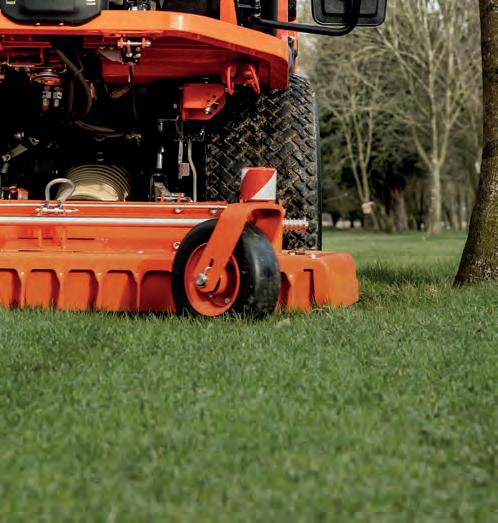



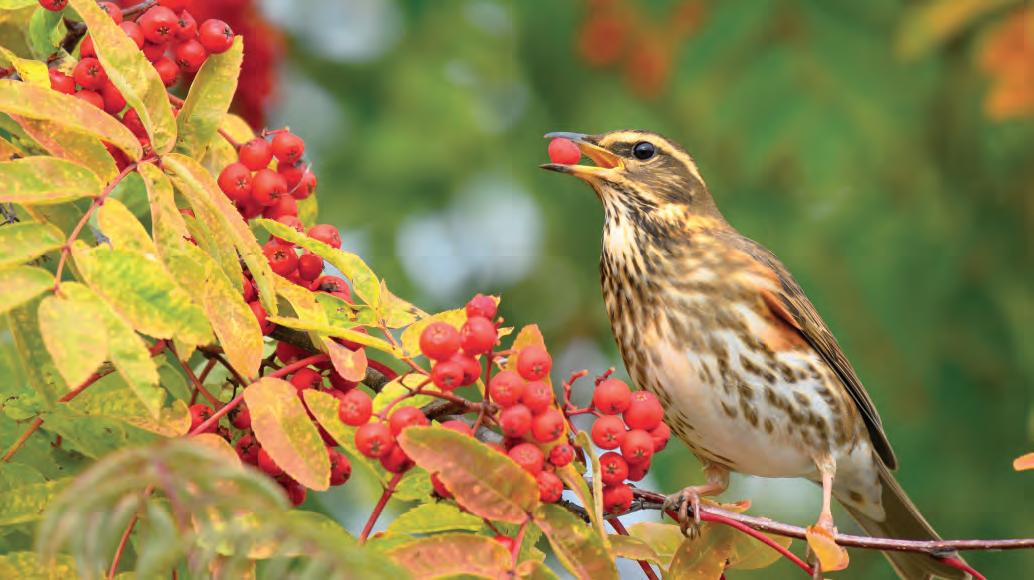
is just around the
As we come out of the winter and into spring, here’s a few things to be looking out for...
Above A beautiful Redwing (Turdus iliacus) feeding on Rowan tree berries.
Below The common chiffchaff in Spring.
You could still see a few last remaining winter migrants such as Redwings or Fieldfares, as they feast on berries remaining on trees and shrubs - or maybe just searching around for worms like our resident blackbirds.
As the winter migrants depart, then you should start to see the first returning summer migrants arrive and you’ll be starting to think summer is just around the corner.

Summer migrants to look out for:
March
• Wheatear - more coastal courses and heathland but could turn up anywhere
• Chiffchaff - very noticeable by its distinctive song
• Blackcap - males have a distinctive ‘black cap’ and the females have a chestnut brown cap
• Sand Martin - smallest UK hirundine traditionally nesting in sandy cliffs
April
• House Martin - similar to the Sand Martin, but black with a white rump
• Swallow - blue backs and red throats with very distinctive long forked tail
• Cuckoo - usually heard with its loud cuckoo cuckoo call
As well as birds to look for as we get into spring, on mild warm days you should start to see the first butterflies as they emerge after the winter.
Butterflies to look out for in March & April:
• Brimstone - bright yellow and usually the first to appear
• Orange Tip - small white butterfly. The males have orange tips to the wings
• Small Tortoiseshell - one of the most common butterflies in the UK with striking colourful wings
• Peacock - large butterfly with four eye spots
• Comma - named because of the white Comma like marks on the underneath of its wings
• Red Admiral - distinctive red bands and white spots
• Small White - a small white butterfly with black wing tips and two small black spots

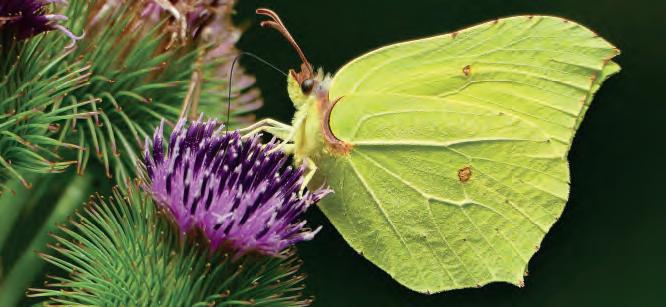

Above Brimstone butterfly. Left Small Tortoiseshell butterfly.
Below The National Trust Insect Tower.
Bottom DLF Colour Boost range: Biodiversity.
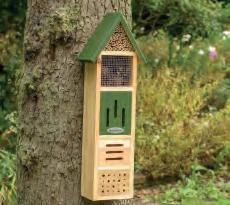
• As it gets towards the end of March and into April, there is less chance of severe frosts and now would be the perfect time to prepare a wildflower area and sow the seed ready to attract all the nectar loving insects later in the year
• When planting for wildlife, try to bear in mind foodplants of particular species, like Garlic Mustard for the caterpillar of the Orange Tip Butterfly and Rosebay Willowherb and Bedstraw for the Elephant Hawk Moth caterpillar
• Now would be a good time to consider planting a few trees that would bear berries/fruit in the autumn like Rowan or even apple trees to supply birds with food going into winter
Tree Hugger™
Biodegradable Guards allow light transmission throughout the visible spectrum, but with the highest transmittance from wavelengths which are valuable for plant growth and health and lower transmittance from wavelengths which can be harmful to plants in excessive amounts.
Plastic is a problem. It doesn’t biodegrade and it’s not environmentally friendly. Yet, it’s often turned to for its longevity and effectiveness when it comes to protecting young trees from damage.
Back in 2021, the Woodland Trust announced a bold pledge in the war on waste; no more new single-use plastic tree guards on their land. However, plastic is still widely used in amenity settings across the UK.
Biodegradable options are not only better for the environment, but crucially, offer vital protection against grazing and browsing animals and provide an enhanced growing environment in the first years of tree establishment.
Pitchcare recently visited Wincle Grange Farm to explore a scheme where they have introduced environmentally friendly tree guards.
Ralph Connolly from Cheshire Wildlife Trust expanded on the project: “Here at Wincle, we’ve put together a 35-hectare agroforestry scheme, which looks to integrate native broadleaf species of trees into a working farm business.”
“As the range of trees develop, they’ll provide habitat for wildlife - particularly birds and invertebrates and provide multiple benefits for both the farm business and local wildlife. This scheme has been two years in development and funding comes from Defra’s Trees for Climate project, which provides grants for tree planting.”
“Wincle will become an excellent case study given the vast 11,000 trees planted - all with Tree Hugger™ biodegradable guards.”
Made from organic cotton encapsulated in renewable pine tree rosin. The woven material structure provides protection from weather extremes and grazing animals. The cotton creates a microclimate with good airflow that prevents damage from frost and heat, allowing the tree to thrive.
At the end of their lifespan, they will completely biodegrade, meaning that the removal of plastic shelters is no longer required, saving time and money, and ultimately reducing the amount of plastic waste.

Commenting on the environmental impact the Tree Hugger™guards will offer, Agrovista Amenity’s Landscape Manager, Ed Smith said: “Schemes and inititatives now available mean there hasn’t been this scale of tree planting since the early to middle 1900’s. Since then, our understanding and needs have all advancedalong with developments to help newly planted whips establish and survive.”
“We all recognise the negative effects plastics can have if they are left in our environment and this is why many recycling schemes have developed over the years. If we look at the waste hierarchy though, recycling is third behind reuse and prevention.”
“Tree Hugger™ guards prevent any risk of pollution (plastic guards that may have been washed or blown away) and there is no need to go back and collect after their lifespan, which is a painstaking and costly task.”

















































James Kimmings sat down with Wellington School’s Bethany Gibbs after her recent success at the GMA Awards, as she took home the Young Groundsperson of the Year Award.
We discuss her turfcare journey, as well as the growing need to diminish gender stereotypes within the industry.
Can you tell us a little bit about your journey so far?
I didn’t know what I wanted to do as a career before I left school and I was nineteen when I first got into the industry. I knew I wanted to work outside, and the only career suggested to me was working on a building site or in construction. After a little research, I came across turfcare and got the position at Wellington School. I have already done my
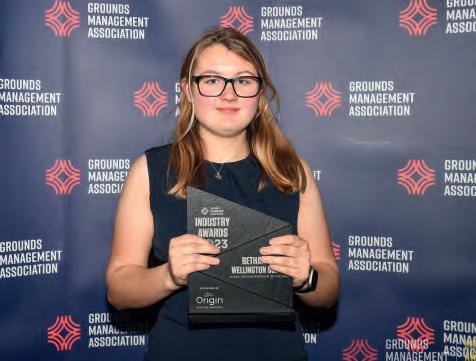
Level 2 qualification and I very much think I will stay in the independent school sector now; it’s rewarding seeing pupils out on the surface that you have prepared.
Let’s talk about the award; how did it feel from a personal perspective?
To be honest, I was very shocked about receiving the award. My boss had been encouraging me, but I was just happy to get recognised for the work that I had been doing. You don’t receive a huge amount of recognition in this industry and it’s easy to have self-doubt, so winning the award has given me that personal pat on the back for my hard work. At the end of the day, I love doing my job, so the award was just an added bonus.
Does the recognition give you motivation for the future?
Winning the award has given me a lot of motivation. It made me think ‘I must be doing something right’. It has cemented in my mind that I want to stay in the industry for a long time. I can’t tell you what I want to do in ten years, but I do want to stay in turfcare.
In terms of diversity, being a woman in a male-dominated industry, how have you found this?
I’m the only woman in my team, but all the men I work with have been great. When I first started, they would ask ‘Are you going to be able to lift that?’. Naturally, I wasn’t as


physically capable as them, but we have learnt what I can and can’t lift, so it works for everyone. We all come together as a team; we all bring different skills and qualities and that is what makes it work.
In your opinion, why should more women consider a turfcare career?
At Wellington, I work during the week and then the odd weekend which works well for a work-life balance; particularly when you are trying to start a family later on in your career. I’d say to anyone, not





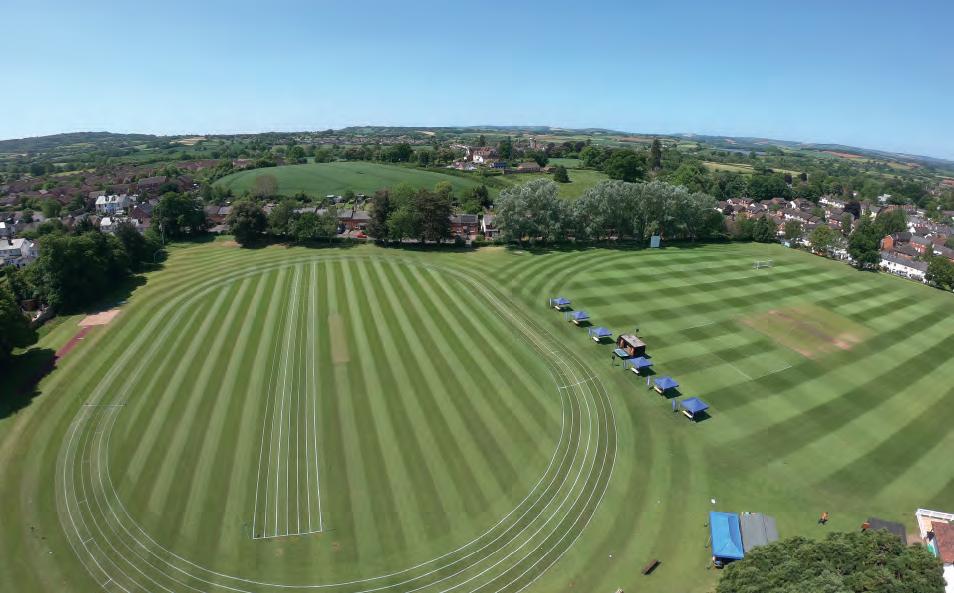
It has cemented that I want to stay in the industry for a long time
just women, this industry is one of the most rewarding that people can get into. The most rewarding thing is getting to see the students develop their skills in sport by playing on the surfaces that you have had a hand in preparing. If you want to work outside, and you don’t see yourself working at an office job or behind a computer, then why not try turfcare? It certainly shocked me how much I enjoyed it.
Could our industry Associations do anything more to promote turfcare in schools?
Before anyone becomes involved with turfcare, they don’t know what it is and we need to start educating young people. BIGGA’s First Green initiative is fantastic for targeting school children, as well as teachers and parents, and we need to continue to push hard in those areas to engage the future generation.
What would your main advice be to your younger self about working in turfcare?
A few of the stereotypes spring to mind, particularly; because you’re a woman, you’re not going to be physical enough. I would say to my younger self to try your best and push through the tough times. When the weather is bad, you are out in the rain and you just push through this because the good times outweigh the bad times for sure. I’d also say just focus on yourself; apply yourself, do what you can and it will show people that you are enough.
Have the team at Wellington been supportive of your journey?
They’ve been really supportive. I wear hearing aids, which is sometimes difficult, but the guys here have been super helpful with that. They have just treated me like a human and let me get on with my work life. My boss always tells me to let him know if there is anything that I need or require any help at any point. They want me to progress and have put me through several industry courses. I am hoping to do my sprayer course soon, so that’s just another bonus.
What is next for Bethany Gibbs? Where do you see the future of your career?
I wouldn’t go as far as something like an Estate manager. I would prefer to be a Head Groundsperson as you are more hands-on with the team. That would be my ultimate goal. For now, I am just going to keep doing what I am doing and working hard. I don’t want to think too far ahead.







Derek
Cooper, Greens Manager at
Wokingham Bowling Club speaks about what preparation is needed ahead of a busy season of
bowls.
There are many factors which will impact winter maintenance and season preparations of a bowling green including ground conditions, weather, soil profile etc... but one thing thing is for sure… time is important!

How critical is winter maintenance when you are preparing for the season ahead?
Winter is probably the most important time; this is when you can undertake work on the greens without causing any interruption. You can level up the greens and repair all the areas which have been damaged throughout the previous season.
At the moment (mid February), we are carrying out a lot of aeration; trying to get the grass to grow and treating the surface to deter moss. The main aim during January and February was to encourage healthy root growth and we will undertake both verti-cutting and light scarification in the coming months. Then, we will bring out the Turf Iron when we get closer to the start of the season.
These winter months are about undertaking all those jobs that can never be done throughout summer when play is often from 10am to 10pm. During November/December time, Turf Care Leisure Services were contracted to verti-drain. Currently, down on the bottom green, we are adding wooden batons on the ends of the green to stop it dropping down when players put their feet
on the edges - which causes it to break or sink.
Additional help
The contractors Bicester Turf Care will come once a week, depending on the weather conditions to undertake work which needs heavier equipment. If you aren’t using that type of machinery all of the time, that’s when injuries can happen and we don’t want that. Myself and the team carry out all the day-to-day management and tasks, however, it is a volunteer-run team so it can be hard to manage time.
How does the height of cut differ before and during the season?
Throughout February, we cut a couple of times at 12mm, then in March, we will start to increase the number of cuts on the greens to two or three times a week at about 10mm. By the end of the month, we will be cutting every day down at 5mm.
By the start of summer, we might go down to 4.5mm depending on the conditions, but I wouldn’t go any lower in case we get a hot spell and the surface turns brown.










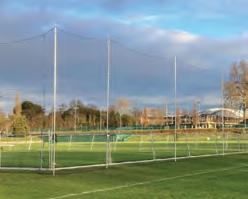






My role here is more managerial than my previous position at Sunningdale Bowls Club; I have to do more organising here which includes managing people and working with contractors.
At Sunningdale, I did a lot of the work myselfincluding spraying the greens - however, I did have a small team of volunteer helpers to cut and spike the green. I only had to manage the cutting rota.
At Wokingham, we havea larger team and more individuals who are on hand to help with what is needed.

Being a player at Wokingham Bowling Club, does this give you extra motivation to produce the best possible surface?
Definitely! I want the best surface here for me and everyone else to play on. There’s nothing more rewarding than when you get other clubs say that it’s one of the best places to play. I always relay those messages to the team and also contractors who have made that happen. The feedback is rewarding for everyone involved.
What are some of the challenges the weather can bring?
Both snow and frost mean you have to keep off the green at all times and there’s not much you can do about that – it’s just a waiting game. Even when it’s all gone, you still have to wait for the green to be fully thawed out as walking on the solid surface can cause significant damage to the roots. Excessive rainfall can also cause a few challenges; it can rot the grass if it sits on the surface for too long – which is why having good drainage practices throughout winter is crucial.
Have you ever experienced any disease challenges here?
I think all turfcare professionals have experienced disease of some kind throughout
their careers. We currently have an outbreak of Fusarium, but it’s not a major issue. With disease it is about spotting it, catching it and treating it before it gets any worse.
What is the pre-season timeline?
From October, it’s repair work from the previous season. Then, you might have a little downtime throughout December and January before it’s full-on preparations from February to the start of the season.


• Products and brands you know and trust, with easier navigation
• Simple checkout process including Apple Pay option
• More special offers and discounts Shop


• Media hub for all turfcare knowledge, advice and industry news
• Engaging daily content including technical updates, product news, education and machinery developments
• New and improved jobs section Media hub


The extreme rainfall seen over the winter has challenged many groundsmen, none more than at racecourses. Jane Carley catches up with some of the worst affected tracks and hears how they are progressing into spring.
When it comes to water inundation, the team at York Racecourse consider themselves relatively lucky, as racing manager and raceday clerk Anthea Leigh comments: “We don’t suffer from overall flooding – it’s just a couple of areas such as the one and a quarter mile start and the main crossing near the rear of the saddling boxes.”
Historic flat racing course York is situated on the Knavesmire, a flood plain of the River Ouse, with a wetland area adjoining the track itself.
Water enters not by the River Ouse bursting its banks, but rather by pushing up into the drains which are designed to carry rainwater away from the land.
“After flooding in 2008-9, six Penstocks were installed as part of a major drainage and irrigation project, which prevents the river water backing up into our drains, but high water levels still affect the ability of the land to drain.”

“Water comes from the culvert designed to drain into the Ouse, back through the drains and out of manholes in these conditions,” explains head groundsman Adrian Kay. “When I started at the racecourse, I was told flooding was a one in 100 year event, but it’s happened a few times since then!”
Monitoring water levels helps make best use of the Penstocks – they are closed when the river reaches 2.6m above its normal level and only reopened when this drops to 2.4m. At this point, water held in the drains flows back out in the river.
While winter flooding is a frustration, as it hinders work for the flat season ahead, today’s more frequent flood events are a greater concern.
“We can’t race if in flood; despite the drainage we can’t guarantee a race meeting will go ahead after exceptional rain as we can’t get on the course to prepare the surface,” Adrian points out. “Also, as the water recedes, silt sits on top of the turf on the low lying areas. But equally, we
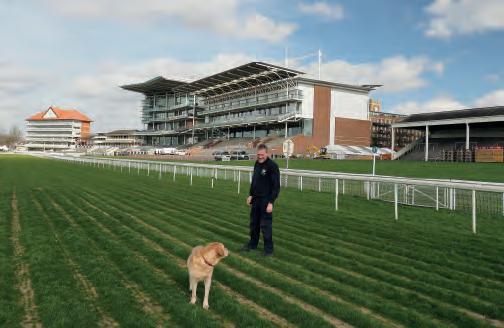
need the water to move as quickly as possible, hence the investment in drainage.”
Its effectiveness was proven when the course flooded in September, but York was able to race a month later.
“As the water doesn’t generally sit on top, the turf is not submerged for long. The main task is tidying up afterwards,” comments Anthea.
Further investment in drainage was made in 2015-16, when the city of York was underwater and the home straight was flooded, as it had been previously in September 2012 and in 2005.
An important part of the winter workload is rodding drains and examining the system to look for breaks.
“The drainage is very well maintained,” comments Anthea, “Adrian and his team also carry out a programme of ongoing annual maintenance which can include excavated sand slits, the use of a Koro Top Drain, and top dressing with sand, which all helps to keep the drainage system connected and ensures the movement of water away from the racing surface.”
“However, the ground remaining saturated meant that we were not able to get on to carry out drain jetting over this winter, so it was delayed until March,” comments Adrian.
While the Knavesmire befits its name long after the flood waters have receded, the track itself has returned to normal, and despite some holdups to the programme, preparations proceed well towards the start of the new season.
Main York may look pretty with its water feature but preparations for the new season are hindered.
Above York groundsman Adrian Kay inspecting sand slits installed in 2022, part of an ongoing maintenance programme for the drainage.

Southwell clerk of the course David Attwood is no stranger to flooding, having previously officiated at Huntingdon, while the Nottinghamshire track has also been underwater a number of times.
Storm Babet caused the adjacent River Greet to overflow and submerge the track on 21st October, leading to the cancellation of seven allweather and one turf fixtures, as David explains: “We have flood defences and schemes in place, but the exceptional amount of rain left 60cm of water on both the turf and all-weather tracks.”
Such an inundation of water can affect the integrity of the Tapeta surface, so once the water had gone down it was inspected by Southwell’s agronomist. “He saw no difference in the performance of the particles that make
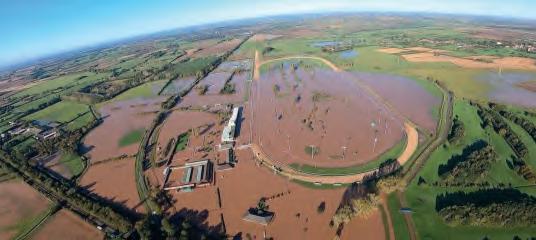

Left
Water still lying on the turf in places, but the Tapeta track at Southwell was quickly returned to pristine condition, and racing resumed just five weeks after severe flooding.
up the surface, but there was a layer of silt on top, so this was effectively ‘peeled off’ and the Tapeta regraded.”
The turf track, however fared less well, he comments, “We are still seeing the impact of the high moisture levels in the soil some three months on. Any rain is highlighted further – at New Year, we had 16mm which the track would normally cope with, but this year it became waterlogged.”
The high soil moisture has also prevented the groundsmen from getting back onto the track to carry out decompaction or apply fertiliser.
“Fortunately we have a slightly different racing programme this year, so there will be more time for renovations. We usually race every month, but have no fixtures in July, August or September, and a busier programme through the winter. This will allow for planned drainage works to take place, and we will need to get on with fertiliser and carry out a programme of decompaction.”
The racing surface had recovered sufficiently for racing to restart on 28th November, although meetings had a very different feel initially. Site buildings were under 1m of water, affecting everything at ground floor level, including the stables.
Equine accommodation was back in use by 24th November after pressure washing and steam cleaning, but the hospitality facilities, offices and weighing room were out of action until the spring.
Flood attenuation work carried out after the 2012 inundation included new dykes and ditches, plus flood banks next to the river, and while the river has flooded since October 2023, this mainly affected a purpose developed wetland area, and the defences did their job.
We will need to carry out a programme of decompaction

Left
Effective drainage means that turf can recover well, but getting on to carry out renovations is difficult…even foot traffic takes its toll.
Below
Restoration of the track and facilities takes a huge team effort – Huntingdon clerk Roderick Duncan is pictured (left) with some of the Jockey Club Racecourses groundsmen drafted in to help.
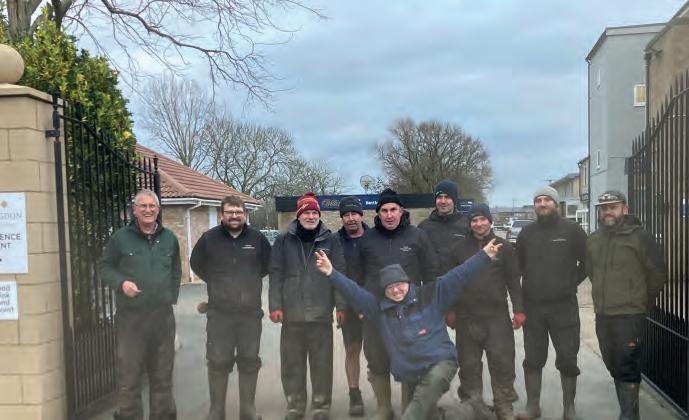
Huntingdon Racecourse suffered the blow of losing its biggest race of the year, the Peterborough Chase, to the flooding that hit East Anglia particularly hard in the autumn.
An early task after Storm Babet passed was to clear up debris deposited on the boundaries of the track.
“We were fortunate to have additional staff from other Jockey Club Racecourses such as Newmarket to help,” comments clerk of the course Roderick Duncan. “There was also a layer of silt on hard surfaces, which makes everything slippery, and we pressure washed to move it.”
After previous experiences, the team at Huntingdon use advance warnings from the Environment Agency of water levels upstream to clear away as many items as possible – such as wooden bypass markers - that might be caught up in floodwater.
The track, however, takes flood water well. Jockey Club Racecourses has invested heavily in drainage improvements, with outflows from ponds into ditches into the River Alconbury so that water can be carried away from the turf as soon as river levels go down.
“We do note that the area in front of the grandstand gets compacted due to the weight of the water that gathers in that area, so we aerate quite a bit.”
A major flood defence project was instigated as part of the planning permission to extend the
stableyard – a flood wall for the new block and a clay bund around the rest of the yard.
The flood attenuation area included a large wetland development that Roderick says ‘went above and beyond what was required’ and has had a highly positive impact.
“High water levels returned in November, when we could expect the stables to be flooded, and this helped to avoid it.”
“We’ve also added a water attenuation tank so that we can pump water out, at a compliant rate and at an appropriate time,” says Roderick. Improving water uptake is another action by the racecourse, establishing 6000 hedge plants that will use moisture and help with flood control.
Environmental impact of water movement also impacts on groundcare, he explains,
“We have to be more flexible with fertiliser applications and ensure that we are not putting it on when there’s a risk of it being washed away and nitrates entering watercourses.”
Roderick says that while repeated flood events continue to affect Huntingdon, the impact of improvements and a lot of hard work are encouraging.
The racecourse works closely with the Alconbury Residents Flood Attenuation Group, and the development of ponds created upstream to slow the flow of water into the river meant that during a Christmas flood alert, which would previously have entered the buildings, they remained dry.

After flooding on 2nd January, Stratford Racecourse saw flood waters recede quickly, but in the 48 hours the track was inundated, a considerable impact was made.
“The mess and debris made a lot of work,” explains clerk of the course Nessie Chanter. “Water entered the buildings so the carpets have had to be lifted and there was silt residue everywhere.”
She notes that the water came in with such power that it shifted three permanent steeplechase fences. “We were only able to move them back when the freeze up came – we borrowed trackway from Warwick and, due to a significant effort by our head groundsman Sam Linley and his team using two forklifts, we were able to replace them without removing all the birch, which would have been a huge task.”
Compaction was another issue – Nessie explain that a cubic metre of water weighs one tonne, so vertidraining as soon as the surface was fit was an important task. “The silt affects the sward’s ability to utilise nutrients, so we will need to apply fertiliser earlier than usual, although the vertidrain helps with uptake.”
With the first meeting of 2024 at Stratford
Top Silt carried into buildings means that everything has to be washed down.
Bottom The weight of water on the turf can lead to compaction, points out Stratford clerk Nessie Chanter.

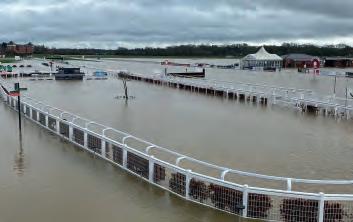
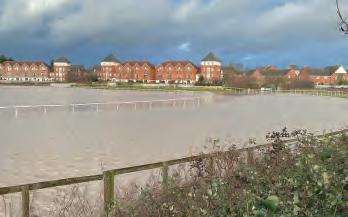
scheduled for Monday 11th March, the main issue is the delay to preparatory work. “It’s frustrating,” says Nessie. “The track was clear of water within 48 hours, but it was weeks before we could get on to do any work; we had further flooding in February which added to the workload.”
With the track situated right next to the River Avon, flooding to a varying degree is a regular occurrence, and there’s little that can be done to prevent it.
Water comes in on the second bend, but investment in drainage means that it is carried away as soon as river levels fall. “One outlet was very low so nothing would shift until it had gone right down,” she recalls. “But we found some old Victorian culverts and diverted the drainage into those so we don’t have to wait as long.”
“On the upside, our proximity to the river means that we have a very generous extraction licence. Even in the prolonged drought of 2022, it was more than ample.”






Some may condemn them as pests, others as chirpy, cheerful relatively recent residents of Britain. Like or loathe them, ring-necked parakeets (RNPs) have become a permanent fixture in urban and semi-rural spaces across the UK.
Above Ring-necked parakeet (Psittacula krameri).
Right Ring-necked parakeets usually feed on buds, fruits, vegetables, nuts, berries, and seeds.
Anecdotal evidence alone would suggest numbers are rising. Five years ago, I’d have never spotted any in my south Manchester neighbourhood. Then two would fly over occasionally, squawking noisily as they darted across the garden. Now, four sweep through regularly.
Although they have spread countrywide since they were first spotted in the wild in the mid-1900s – far from their native Asia and sub-Saharan Africa - RNPs are gregarious birds that prefer to congregate rather than live solitary lives.
Most of the UK’s population, however, originated from Pakistan and northern India,
the Natural History Museum (NHM) notes, imported here as exotic pets. “None made it under wing power,” it adds.
Their largest populations are reportedly the south-east, notably London’s Richmond Park, Didsbury, south Manchester, and Victoria Park, Glasgow, although they have settled in many city and suburban parks, large gardens and orchards across most English counties, much of Wales, the Scottish borders and Northern Ireland, the NHM states.
Fairing “particularly well” near humans, the birds have become habituated, the NHM says, and will take food from your hand in sites such as Kensington Gardens, while “thousands of them settle overnight in Hither Green Cemetery,
London”. Total numbers were estimated to be 12,000 breeding pairs in 2016 and rising (British Trust for Ornithology data).
Nesting typically in tree hollows, cavities or large nest boxes, Psittacula krameri, which also covers the rose-ringed parakeet, boasts a competitive instinct and opportunistic nature. “They can be aggressive and violent,” states Florin Feneru, NHM identification and advisory officer, “and have been known to kill small mammals, such as bats in tree hollows.” About 40cm long, they have a powerful beak for breaking open seed – “tough characters that fight to win,” the Museum adds.

of ecosystem impact in the UK, that it would not be the best use of conservation resources at this time.”

Exotically plumaged with a cheery demeanour, RNPs may well fall into the same category of lovable rogue as the ever prevalent grey squirrel. But like those wily rodents, they can become a pest when they interact too closely with our lives, personal or professional.
Resident reports emerge periodically of just how intrusive a flock of chattering parakeets can be when you live close by them, particularly when in flight or before bedding down for the night. More vexing perhaps is the question of whether or not RNPs pose a threat to our native birds and, if so, what measures can we take to deter them from being so.
North West golf clubs are certainly aware of RNPs’ presence. Dunham Forest greens staff spot them regularly, so does Lymm, whose course manager James Dennet notes: “We have a flock of twelve ring-necked parakeets currently and try to scare them away from woodpecker nests, albeit not very successfully. Although an invasive species, there is no official stance on them so it is a bit of a grey area.”
Accepting that the parakeets are a permanent fixture here, the RSPB wants tighter controls to help prevent invasive species crossing borders via human intervention, commenting: “Overall, we do not support control of RNPs as they are so well established, with little evidence
“What is important,” it adds, “is future prevention of invasive species being introduced by humans. Welcoming the creation of the Non-Native Species Inspectorate, set up in 2021 to tighten border control of imported invasive species, the Society needs the inspectorate to expand its role “to cover more pathways of introduction, with special attention on Freeports, where there is elevated risk on new species arriving”.
“We also need it to expand to become a centre of excellence and best practice on INNS (invasive, non-native species) management more widely.”
The control programme the UK introduced for the monk parakeet (Myiopsitta monachis), which settled in London in the 1990s, looks unlikely to be repeated for RNPs, the Natural History Museum concludes, “although conservation charities are watching them carefully”.
RNPs tend to stay quiet around nesting sites to avoid the attention of predators such as tawny owls and sparrowhawks. They start nesting in January and February laying three or four eggs, “earlier than native species”, says the NHM, and so may outcompete them.
Dr Hazel Jackson, a research affiliate at the University of Kent and a parakeet specialist, hesitates to call RNPs a problem in the UK, although pointing out that “they may compete with native nuthatches and woodpeckers for cavity hole nest sites”. Despite “lots of anecdotal evidence through video footage for example”,
National agencies agree that RNPs pose no discernible threat to native bird species. The RSPB takes a strident stance on the issue.
“No evidence (exists) of significant impacts to native wildlife from RNP in the UK,” it told Pitchcare.
That’s not the case in mainland Europe however. RNPs have affected bat roosting sites in southern Spain, for example, where fighting between ‘invader’ and ‘defender’ ended in deaths for the residents, reportedly.

hard evidence of this comes only from Belgium, she states.
More scientific study is needed to determine whether they are an invasive species causing harm to native wildlife, she concludes. RNP adaptability enables the birds to thrive in new locations (they are found in some 35 countries outside their native range, the NHM reports) feeding on seeds, fruit, flowers and young buds, even tree bark and blossom.
Sources suggest their introduction into the wild came about when pet RNPs either escaped their captivity or were released when no longer wanted. An outbreak of parrot fever in the 1930s and ‘50s prompted a ban on the birds, with owners fearful of contracting the disease releasing them.
“Ring-tailed parakeets are here to stay,” Dr Jackson believes. “After 50 plus years, there are no obvious and significant impacts to UK wildlife reported so far,” remembering that “they are a second favourite (prey) of London’s peregrine falcons”.
As increasingly today’s guardians of wildlife and species diversity, golf clubs particularly can do worse than maintain a watching brief on the impact of RHPs on native species – perhaps contributing to the Big Garden Birdwatch annual survey – to help collate the trend in numbers. Afterall, courses offer a fair match with the mature trees and mixed hedges the parakeets favour in their native habitat.
RNPs are an invasive species, says Dr David Noble, principal ecologist - monitoring at the British Trust for Ornithology, but their impact is far from fully proven.
A BTO 2011/12 survey found RNPs had had no impact on native species in the UK. “The places where they are increasing are not the places where woodpeckers, for example, are decreasing,” Dr Noble states.
RNPs’ potential to compete is “overrated” sometimes, he argues. “Great spotted woodpecker populations are in fact increasing,

up 137% over the last 25 years, but the lesser spotted is not doing well. However, parakeets don’t usually encounter these. Green woodpecker numbers rose just 2% in that time but have fallen 25% in the last ten years.”
“RNP numbers have risen 1960% from the early to mid-1990s, but 90% in the last ten years.”
“Some reports indicate their negative effect on biodiversity and economics, but numbers of RNPs have passed the point where they could be eradicated. It’s a question of control,” he adds.
Shooting was the method of choice for other species of parakeet but this is unsuitable in urban spaces, and besides, says Dr Noble, “Most of us like parakeets. They are an urban bird, loud and gregarious, whose numbers have risen very quickly over the last 30 to 40 years within the London circle.” Harsh winters, such as 2017’s Beast from the East can hit them though, he notes, “although being adaptable, they will spread north with climate change.”
Food is not a determining factor, Dr Noble continues. “Bird feeding offers a potentially huge extra source, so we don’t believe that

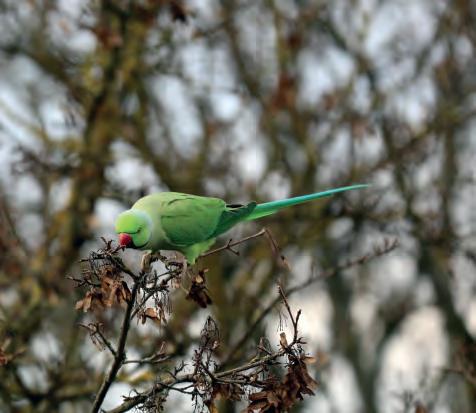
parakeets eating from feeders would negatively impact native species. If the food goes quickly, feeders are soon refilled. Competition for nest cavities is the main focus.”
The BTO avian data comes largely from its Breeding Bird survey, conducted by volunteers annually at some 4,000, 1km square, randomly selected quadrats including amenity and sports sites, as well as urban buildings.
Given golf clubs’ rising importance as wildlife habitats, “the survey could be developed further
to focus on golf courses for example,” Dr Noble says, to assess how various species, including RNPs, are faring in the UK.
Monitored every six years, the parakeet population is largely restricted to urban green spaces, although RNPs can travel long distances to communal roosts, “and will make exploratory visits to bigger spaces that may offer good habitats”.
“We should keep a watch on RNPs,” Dr Noble concludes. “If they become so numerous, they will have greater impact on native bird populations than currently the case.”
Article by Greg Rhodes.
Ref: Natural History Museum: https://www.nhm.ac.uk/discover/ring-neckedparakeets-in-london-and-uk.html#:~:text=’Ring%2Dnecked%20parakeets%20 are%20cavity,’


As manager for Wiltshire College & University Centre’s (WCUC) grounds team, Ollie Adams has to ensure premier standards are delivered across no fewer than four campuses totalling 60 acres’ worth of groundcare.
He leads a team of five, based at WCUC’s Lackham campus.
Lackham is an historic estate dating back to 1000AD. Its Georgian manor house is enclosed by 500 acres of estate farmland and ancient woodland. The campus offers a range of land-based courses including agriculture, horticulture, animal care and countryside management, amongst others.
“I was approached last summer to look after all four campuses,” says Ollie, “although nearby Chippenham and the Trowbridge and Salisbury sites are far smaller than Lackham.”
The team manages some 40 acres at Lackham, including formal lawns, amenity areas, a 200-year old walled garden for the Georgian mansion centrepiece, college approach and a stretch of land developed as a football pitch.

Perhaps uniquely across the sector, Ollie’s team almost wholly comprises current and recently certificated apprentices. As part of its horticultural apprenticeship programme, the college is busy building up its Level 2 Sports Turf apprenticeships to strengthen its offering in the land-based industries.
“Since the College began offering a sports turf qualification, our pitch functions as a working project for apprentices,” Ollie explains. “It’s ideal for demonstrating pitch renovation, and offers a space for students to take ownership. Now in the second year, the Level 2 course has really expanded and we are excited to watch it grow.”
Part of a tideswell of groundscare professionals who have moved into the sector from other careers, Ollie left his specialism in fine art to come to Lackham in 2018 as an apprentice horticulture supervisor.
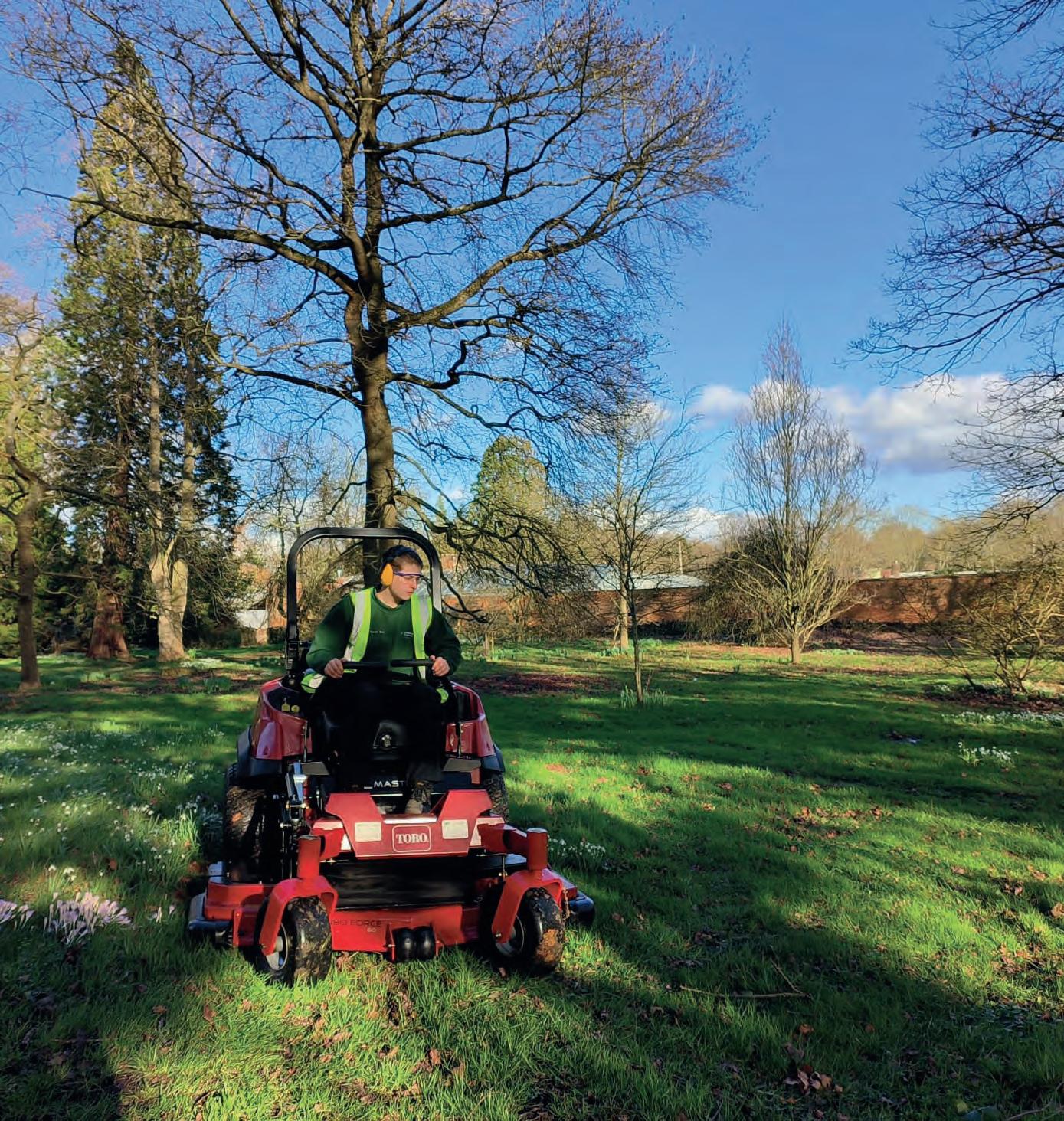
“I fancied a change, as my job in a Bath art gallery didn’t feel right for me,” he recalls. “I loved the outdoors and liked chainsaw work, so the switch worked well – it was the best thing I ever did.”
The team blends groundskeeping skills with creative flair, both at the college and in their leisure time. Ollie adds, “our set programme of work involves plenty of problem-solving and lateral thinking, plus a close eye for detail and composition when it comes to tasks such as pruning, planting plans and garden design.”
His team includes high-flyer Russell Fletcher, a former Lackam apprentice and recent BALI Chalk Fund winner, who also switched careers. “He was a builder for 16 years and knows plenty about hard landscaping, which will come in handy in our garden development work.”
A strong advocate of attracting more women into the sector, Ollie has welcomed two on to the team - Level 3 Horticultural Supervisor Cerys Bird, and Rhianna Bull, a Level 2 Horticulture Operative with “a passion for glasshouse management,” says Ollie. Highly appropriate
as Lackham has three large glasshouses on campus.
“As a team, we all share general grounds maintenance duties, but with Rhianna’s interest in glasshouse work I’ve offered her the chance to supervise day-to-day glasshouse care, so she can develop her passion in this field of work. Within her active management plan, she is looking into alternative heating sources, as this is always a big environmental factor in plant production and preservation.”
The final two team members, Albie Way and Noah Provis, are also both studying as Level 2 Horticulture Operatives, completing what is a strongly academic grounding. “Albie’s highly musical – he studied it at college – and loves music production. Noah has recently moved to the UK from France, where he was working on a local farm in vegetable production.”
Ollie’s mission is to create “a team of good all-rounders”. He’s well on the way to achieving it. “Among us we have PA1 & PA6 certification, chainsaw crosscutting and felling, and experience with a wide range of gardening



machinery, which all sits alongside skills in plant propagation, pruning, planting and a wealth of plant knowledge.”
“As the college is primarily an educational centre, our team’s skill base and knowledge helps to provide technical support for academic horticultural programmes, such as resource provision and facilitating practical tasks.”
“In my second year here, we developed a fully

functional composting bay in a bid to become self-sufficient. Now we have the other three campuses to look after, the plan is to implement a composting system there – smaller than Lackham but properly functional.”
Modifying mowing has helped the team generate far less waste, Ollie reports. “We mow about 20 acres. The previous team collected most of the grass clippings, which created a lot of waste and led to leching high pH ammonia into the ground.”
“When mowing with our new leased Toro Z Master 7500 rotary deck, we no longer box off The job is done far faster and we mow more frequently so there’s little to no grass clippings left on the surface. In the growing season, we’re cutting weekly and can complete the whole campus in two days.”
Ollie adopts the same policy for Chippenham’s sports field and Salisbury’s green spaces, devoting a day for hedgecutting and weed spraying.
A rebuilt garden area at Lackham features a prairie environment of drought-resistant flora. “It’s a showpiece, demonstrating ways to plant responsibly to reduce water usage,” Ollie states.
The success of that project has prompted an inquiry from the Trowbridge campus. “They want us to redevelop a 2,500 metre square courtyard area, full of hardcore, into an urban forest garden space, with robust species that require little watering.”
“The first plantings include liquid amber and ginkgo - to give an example of urban-tolerant planting.”
Sustainable practices lie at the heart of the team’s move to peat-free growing media - “a mix of coir and broken-down woody material.

We started supplying bedding plants to The National Trust’s Dyrham Park last year; lots of marigolds, calendula and snap dragons.”
Using this growing media requires closer management to prevent risk of drying out unevenly and nutrient depletion.
“The college recognises the importance of plant conservation in preserving old cultivars,” Ollie says. “Headed by Horticultural Assessor Victoria Fiander, Lackham manages a national collection of rambling roses and we work closely with RHS Wisley to ensure we don’t lose species to time.”



The drive to electric has its pluses and minuses, Ollie explains. “All our smaller equipment (Stihl) is battery powered but older petrol models carry a lot of ‘oomph’ so we use those occasionally. Using electrics means we don’t have to gear our work around class times because the kit is much quieter. Also, user fatigue is far lower. Charging, which we do during the day, is a minimal cost – about 10p per charge for smaller batteries, and 50p for larger backpack batteries - and we now use just 35l of petrol a year for machines instead of 100l, a big saving.”
Glasshouse heating, insulation and watering is a major project at Lackham. A TomTec automated irrigation system in the propagation house is proving useful. Fabric roller screens retain heat at night, while the college is also exploring “sustainable technologies” such as air and ground source heat pumps to install across the campus.
Article by Greg Rhodes.










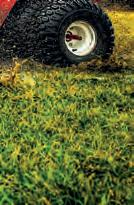








caught up with William Relf
, Sports Grounds Manager
at
Loughborough University as he closed the curtain on a 32-year turfcare career.
William will look to focus on art and travelling as well as doing some part-time work in other turf-related organisations. Find out more in this Q and A.
Can you tell us a few of your career highlights?
The 2012 Olympic Games training camps were a major highlight where we hosted the British Athletics and provided quality surfaces to play on. Additionally, in the sense of projects, about seven years ago we put in three drop-in cricket pitches which was very exciting and innovative. Working with lots of different sports and high-quality athletes has been exciting. Seeing students go from student sport to elite level is important. You like to think that you have had some influence on the development of the
students’ sporting careers by providing that surface to train or play on.
Is it rewarding to see the high-performing athletes training on the surfaces you have prepared?
If we host a football club who usually train on remarkably high-quality surfaces, they expect the same when they come here. We’re trying to mimic what they have at Championship or Premiership clubs - which is somewhat difficult in a student environment.
The National Cricket Academy facilities are based here, so we get high-quality cricketers playing on the pitches we have prepared. Throughout my career things have changed massively - mainly that sport is played all year round now not just term time, which is challenging given the number of different sports we cater for here.
Sometimes, we’re planning three years ahead for upcoming events!
How important have your teams been over the years?
Throughout my 32 years in the job, I have worked with ground staff from around the world. They have all brought different knowledge, skills and expertise from which I have learnt – it’s so important to learn from others around you.
How important is it to share knowledge?
I think professionals sharing knowledge and expertise is something the industry has got right over the last five years; with better conferences and opportunities to meet other grounds managers. The universities have a horticultural officers conference every eighteen months where we try and get as many universities together to learn from each other. I have also been lucky to work with all of the county groundsmen around the country; we meet up once or twice a year and discuss what’s going on in the industry. That’s been extremely
helpful, very interesting, very enlightening. How does the role differ when you reach management level?
It is about learning management skills, so you are then ready to take the next step in your career. Loughborough has so many different sports that you have to learn all of those different intricacies to manage the different areas effectively.
Why is now the time to close the curtain on your career?
I handed my notice in here on the 60th birthday. After 32 years in the job, I wanted to go and try some other things. I don’t want to be tied down by a 8am until 5pm working day. I want to have control of my own time and decide what I want to do - I think that’s quite exciting.
I still want to do some work in the grounds industry, but I also want to go and do other things such as travelling. I trained as an artist when I was eighteen, I wouldn’t mind doing a bit of painting and woodwork and utilise my creativity in something away from turf.



We need to be tackling schools better. We need to get into schools and tell them about how good our industry is. There are a lot of children out there who love sports, but if you aren’t going to be a professional athlete then why not try sports turf?










Below
The team were delighted to win the GMA University & College Grounds Team of the Year in 2023.
What would your advice be for upcoming turfcare professionals?
My advice would be to actively seek opportunities when you are young; either by volunteering at a local sports club or getting hands-on experience and training at a professional club through an apprentice scheme.
What are some of the challenges you have faced throughout your career?
I think the biggest challenge has been the increasing expectations of both students and players alike. All those years ago players weren’t so critical, but the media have played a part in the heightened expectations.
There’s also a lot of scrutiny now coming
I got into turfcare through playing sports; I’m a keen cricketer and when I was younger, I was regularly playing at a local sports club. I soon found myself volunteering with the grounds team, alongside a short career as an interior designer in Nottingham. In 1992, I got made redundant and a job was advertised at Loughborough University as a cricket groundsman. At this point, I had been volunteering for twenty years and I didn’t even realise you could get paid to do this job. I took the position and learned loads in my first couple of years. I was in an extremely fortunate position, having time to experiment and try things on the cricket grounds.
When I think about my time sitting in an office, I really did not enjoy things very much and I always strived to work outside and be creative. As soon as I got the job at Loughborough, I knew it was something I wanted to do and the practical/physical side was what I enjoyed the most.
from the commentators. For example, in cricket, they talk about the pitch as much as they talk about the play and analyse how it could influence the matches.
Can you tell us about the grounds management at Loughborough University?
The university is a large campus, we have 500 acres to manage and 15,000 students either working or living here. We have to be aware of the work we are doing in the environment that we are in; we try and use battery machinery to reduce noise, especially during the exam periods.
What is your management style and how do you motivate your team?
I’d like to think that most of my staff are fairly motivated without me. All three teams have got an exceptionally good manager and I’m reliant on those managers to influence their areas.
We have weekly meetings where we put forward what we want to achieve, but I try to let the place manage itself and don’t get too on top of the staff. If something goes wrong or there is an issue, then that is where I am more likely to step in.


The ZEMMLER® MULTI SCREEN® MS 1000 expands the portfolio of trommel screening machines for gardening and landscaping with a further highperformance professional machine.


This is a lightweight machine in a range of other screeners ranging from a capacity 20 m3/h up to 180 m3/h.
•up to 20 m³/h, for small gardening and landscaping companies
•Single drum, lightweight construction
•can be transported by common passenger cars



THIS SEASON’S MAY BE THE LAST UNDERTAKEN THE OLD WAY!
As the football season concludes, clubs embark on the crucial phase of pitch renovation for stadiums and training grounds and, thanks to technology, this may be one of the last done the old way, says Reesink Hydro-Scapes.
If there’s something that can be relied upon, it’s that technology will be forever changing the goalposts. Here we look at how that is the case when it comes to pitch renovations.
Pitch renovation has come a long way and there’s no going back. In an industry where competitive advantage is everything, it pays to keep ahead with trends and technology.
Pitch renovation is a practical effort to ensure the longevity, safety and optimal playing
conditions of the pitch in good time before the next campaign starts.
The pitch gets a battering throughout the playing season, enduring significant wear and tear from regular use, foot traffic, player movement and equipment use, while environmental factors such as weather conditions, temperature fluctuations and precipitation can all further stress the turf and soil.
Without proper maintenance and renovation,
pitches can develop uneven surfaces, compacted soil, worn-out turf and drainage issues, compromising player safety and game quality. Renovation is a transition that isn’t merely cosmetic, but a fundamental process that sets the stage for the upcoming season.
What does seasonal renovation involve?
Renovating a pitch, whether in a stadium or training ground has lots of elements involved to yield the maximum results and the correct maintenance techniques and technology can add as much as 30 percent to the lifespan of pitches.
Generally, the key processes undertaken during renovation are:
• Aeration to minimise compaction and reduce surface hardness. It allows greater water infiltration and percolation through the soil profile. Using a combination of groundbreaking and verti-draining, creates pathways for oxygen and nutrients to reach the root system. This is a vast topic and one we’ve covered in detail in past articles here and now on our website, visit reesinkhydroscapes.co.uk to revisit.
• Scarifying lightly before and after the playing season is an important football pitch renovation process. It involves the removal of the dead thatch layer, accumulated over a playing season.
• Overseeding to enhance the turf’s density and fill in any gaps or areas of sparse grass, resulting in a thicker, more uniform turf canopy.
• Topdressing to level the surface for an even playing field, improve firmness, modify the rootzone, reduce thatch buildup and prepare a seedbed for overseeding.
Supporting these processes and tying them together for the best results is watering, one of the most important factors in sports turf maintenance. Without the necessary moisture for soil conditioning, seed germination and

material integration such as fertilisation, wetting agents, biostimulants, herbicides and fungicides, then optimal soil moisture levels won’t be reached for that all-important robust root development to deliver the best quality playing surface.
Whether bedding in a new pitch or supporting maintenance season work, that’s just the start of irrigation’s job load. Come the season starting up again, having the technology and system set-up to hand supports the growing and maintenance of the grass, means deep watering is a possibility and pre-match and half-time watering is a given.
And of course, water also has the added benefit of helping in ball movement, wetting the pitch slightly can make the surface faster or slower, depending on the level of moisture. Some teams and players may prefer specific playing conditions and additional application can help achieve the desired ball behaviour –the easy way to be appreciated by the players.
The Toro ProCore 648 is one of the most productive and efficient pedestrian aerators on the market.

Above
When it comes to technology made for the pitch, Toro has the perfect combination of central control technology with sprinkler innovation.
Right Toro B Series sprinklers with additional Turf Cup, tough enough to withstand the sports field environment.
Irrigation and the problems it solves
There’s a focus in the industry for responsible irrigation, preventing water wastage and sustainable practices, with it fast becoming unacceptable to use methods that don’t support guarding the resource.
And at the heart of the solution is a decent central control system. Central control not only fixes many of the problems, such as a lack of accuracy and inefficiency, but allows for strategies for water application, providing realtime intelligence and reporting, helping to make better decisions.
But change isn’t just affected by the central control system, the sprinklers out in the field are equally as important and, if renovation season is about taking the opportunity to address issues like sprinklers, notwithstanding the tough sports field environment or interrupting the pitch surface or requiring digging up for servicing, or creating pooling, then technology has found the solution to all of that too.
Technology aids the responsible use of water
During pitch renovations, it is rarely just internal operation challenges that ground staff face. Changing environmental conditions, unpredictable temperatures, wind and rainfall patterns all have an impact on how a pitch is watered.
Precision in irrigation becomes paramount in this scenario, enabling managers to adjust water delivery effectively, ensuring the turf receives the appropriate amount of water at the right times, maximising water efficiency. Without that control and accuracy, water distribution can often be uneven, compromising
turf quality as some areas become overwatered, risking root rot and nutrient imbalances, while other areas remain dry and under hydrated. Not to mention the increased operational costs and environmental impacts of oversaturation and water wastage.
Addressing these issues requires implementing precise irrigation techniques and technologies to ensure optimal water use. What’s the solution?
Now, innovation and technology deliver a centralised solution to manage irrigation that comes from the cloud and the air.
Using pioneering LoRa radio technology for a fully automated water delivery solution –all without wires and a battery that can last an entire season, this is technology made for the pitch.
It’s scalable so field modules can expand the number of irrigation sectors or, for a more precise monitoring of field parameters, can be added and it’s easily incorporated during renovation season.
Connecting to Wi-Fi or a secure 3G/4G broadband cellular network delivers a wide range of data and functions direct to a device, improving the ability to monitor field conditions up to 800m and deliver water to the right place, at the right time, in exactly the right amounts remotely via an app or web platform. Just when you thought the technology couldn’t get cleverer, it does.
Toro Tempus Air is the technology delivering this latest revolutionary way to irrigate sports pitches and training grounds to market, which will undoubtedly form part of the solution to water management in the future.

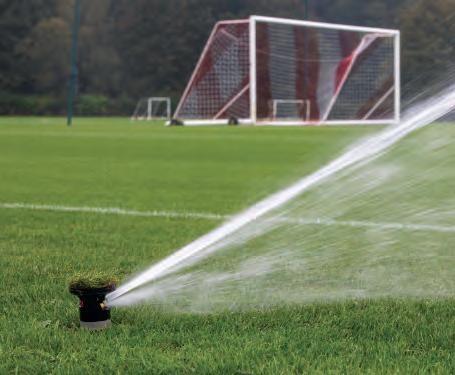
As well as that, it addresses traditional automation drawbacks such as high costs, labour intensiveness and lengthy installation processes, and is scalable too. Its versatility extends to controlling hydraulic valves, water pumps, pressure valve sensors and filters, while also integrating moisture levels, temperature and wind speed data for precise scheduling.
Time for a seasonal sprinkler update It’s not just the central control system that can benefits from an upgrade in renovation season. Sprinklers are a quick fix for big rewards.
Sprinklers should be precise, invisible to both players and spectators and perhaps, most importantly, easily accessible to the grounds team who works on the pitch.
Toro B Series sprinklers, with quick-release rubber cap, provide complete top access to the in-field irrigation system, allowing ground staff to simply pop the top off for servicing without having to dig the sprinkler up altogether. This time saving is essential during a tightly scheduled maintenance regime during renovation and playing seasons.
With a large nozzle selection, the B Series gives choice. No matter the problem or the quirk of the stadium or training ground, such as wind or exposure, sprinklers allow for



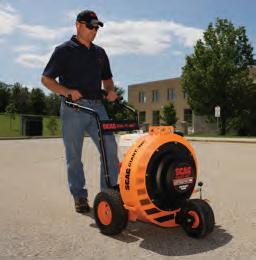





Below Toro Tempus Air brings control to the whole irrigation system, anytime from anywhere, with no wires and no waste.









is a fundamental process
precision by providing the option to easily alter the volume of water being delivered to meet the specific requirements of the pitch.
A full-circle configuration is designed for head-to-head coverage, regardless of the wind and weather, without the need for disassembly or additional parts. And now for even better coverage, Toro’s Flex sprinkler range has updated its riser to deliver a more consistent and defined rotation speed.
Precision irrigation doesn’t just stop patches of turf from being missed, it gives more control over exactly where to place water at any given time. A more targeted approach means only putting water exactly where it’s wanted, avoiding pooling on the pitch, and saving money and the environmental impact of unnecessary water overuse.
Paired with the Turf Cup, designed and available exclusively from Reesink HydroScapes, the Toro B Series becomes a seamless part of the playing surface because grass grows inside the cup to create a continuous area of interrupted turf, for a uniform finish, minimising disruptions and optimising playing conditions.
Left
A bird’s eye view of Middlesbrough Football Club’s new irrigation system from Toro.
Below Renovation season means it’s time to repair the wear and tear and Toro solves pitch irrigation problems easily.
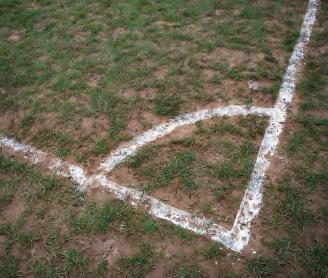
Be prepared for renovation season this year
There’s no better or simpler way to rejuvenate, repair or prepare grounds between seasons than with an irrigation system that combines sustainability with the latest technology. With proactive planning fundamental in football pitch renovation, a partner with an exceptionally quick turnaround is what’s needed to get the ball rolling immediately to make sure players return to a pitch looking and playing to advantage.
With Reesink Hydro-Scapes, and this combination of products, the whole process can be done in just a couple of months, so your pitch can be ready to perform with the new season.
Having a partner at hand for all things irrigation, from controllers, sprinklers and soil sensors to information on how every system can benefit from Toro innovation, Reesink makes an otherwise busy renovation period run smoothly, meaning ground staff can streamline the renovation process while maximising the longterm benefits, ultimately contributing to the quality and sustainability of football pitches.

For further information, please contact Reesink Hydro-Scapes on 01480 226800 or visit reesink-hydroscapes.co.uk
•
•
•
•









•
•
•









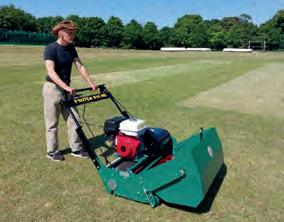
















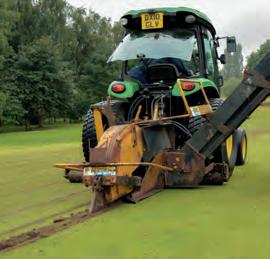


































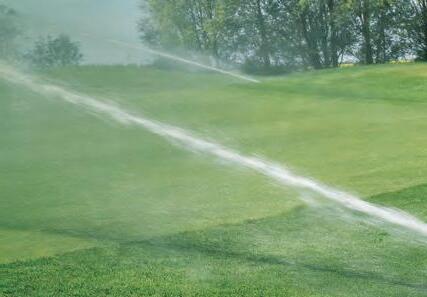



Pick the appropriate Turf Advisor tools for your dashboard and prioritise their order, to better understand soil moisture levels and when to act.
Keep track of recent rainfall and accurate forecasts for the coming days. Instant view of average data for the past two weeks, and historic 10-year records for your current two-week period.
Actively growing turf has a higher requirement for soil moisture. The Turf Advisor GP model, expressed as a % of optimum growing conditions, helps prioritise actions. Use the cool season model for UK turf.
Surfaces dry faster in windy conditions. Wind speed and direction can also influence irrigation head spray patterns and opportunities for wetting agent application.



Syngenta Turf Advisor gives greenkeepers, turf managers and agronomists instant access to a wealth of key information and advice to help make better decisions for day-to-day actions and planning.
Fully customisable for any location and situation, the revolutionary Turf Advisor app provides essential weather data and turf management models, presented in a clear dashboard that can be tailored and adapted through the season to focus on imminent issues and challenges faced.
Evapotranspiration can help us understand moisture patterns and plant irrigation needs. Plant moisture stress is often a limiting factor to health. Turf Advisor forecasts of evapotranspiration can help manage and mitigate any deficits earlier and more effectively.
Soil temperature interacts with soil moisture, along with being a pre-cursor for anthracnose stress, to be considered in any moisture management strategy.
Air humidity will dictate how quickly surfaces dry out – affecting moisture management and disease risks from prolonged leaf wetness.






















